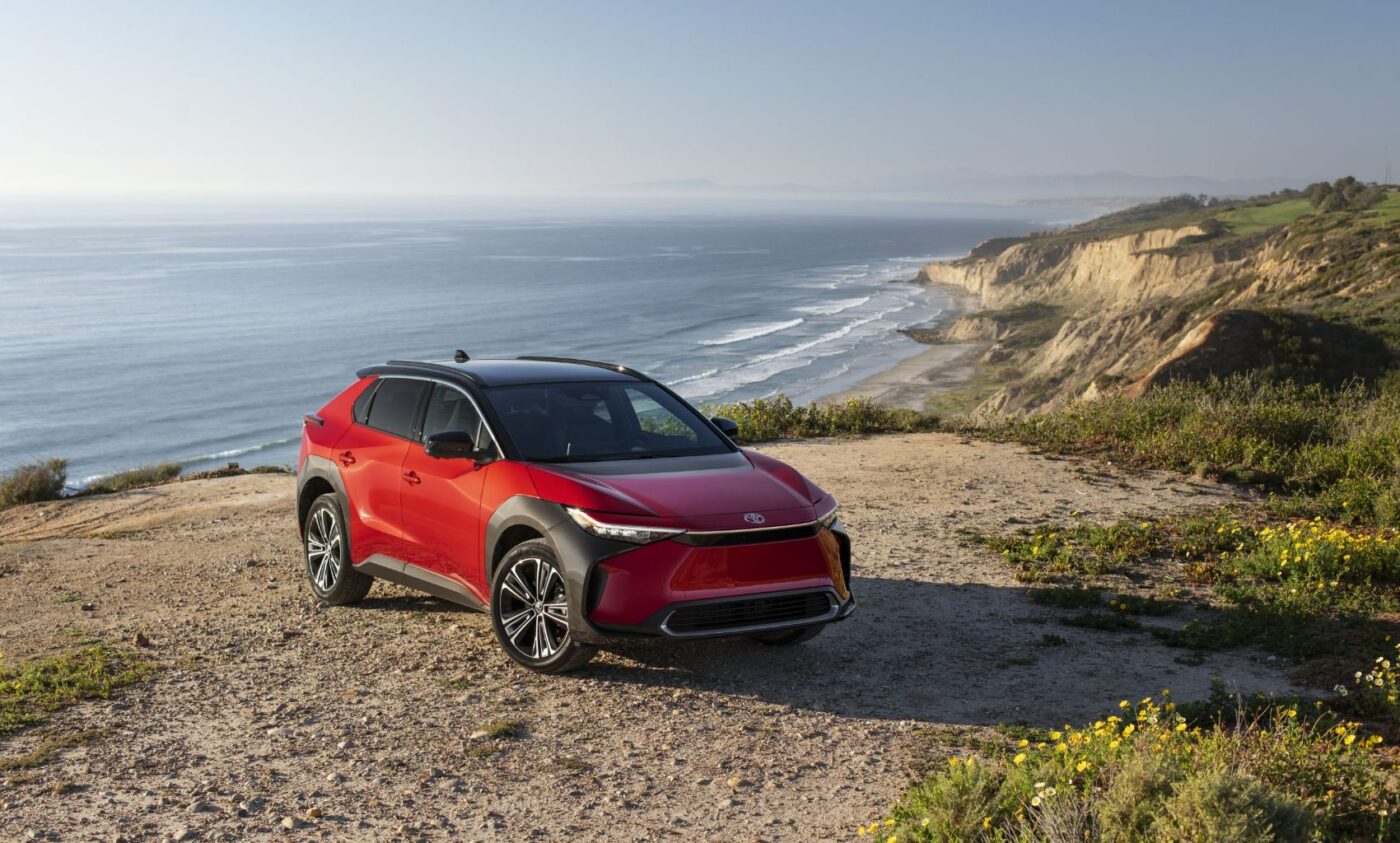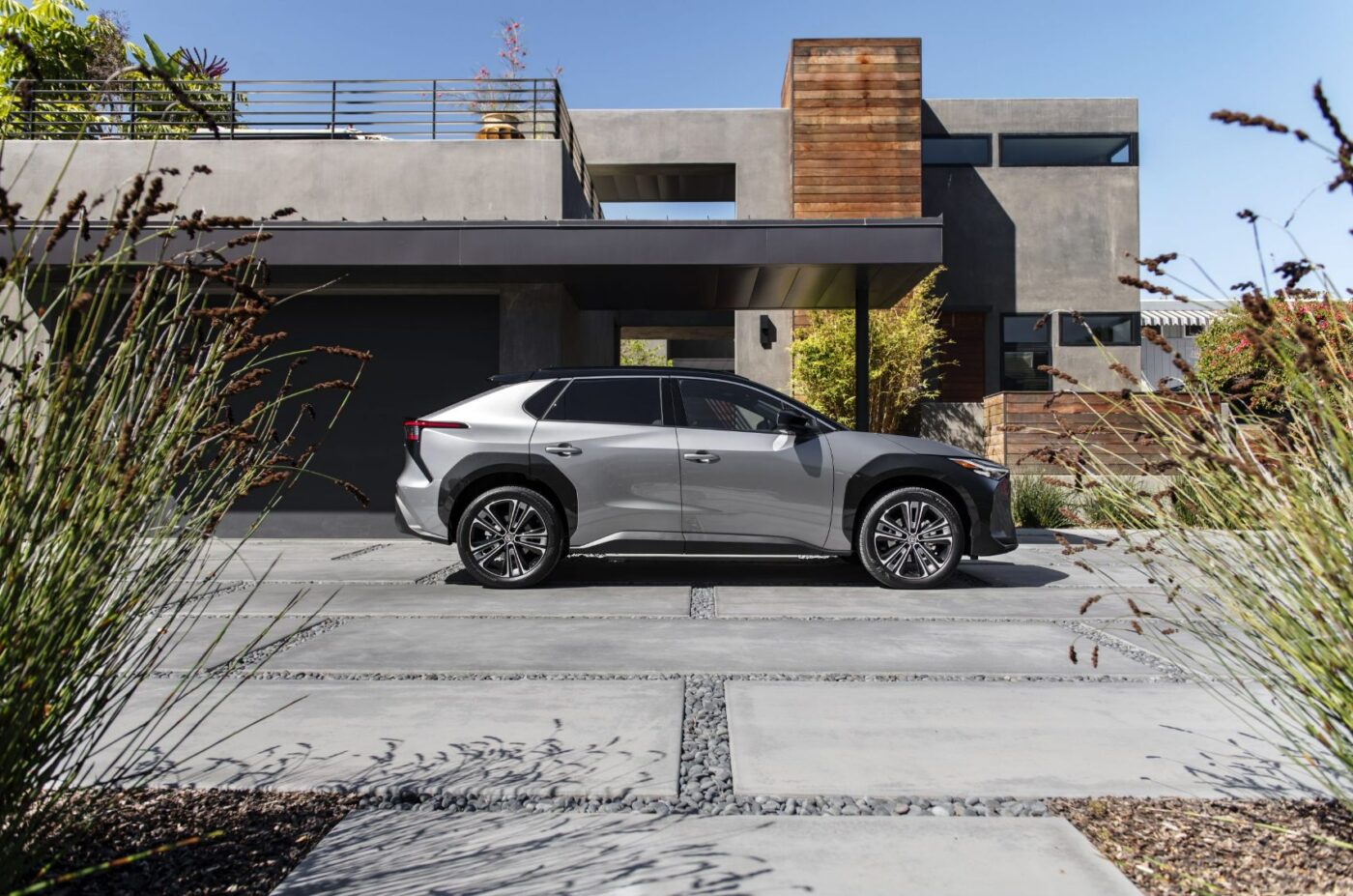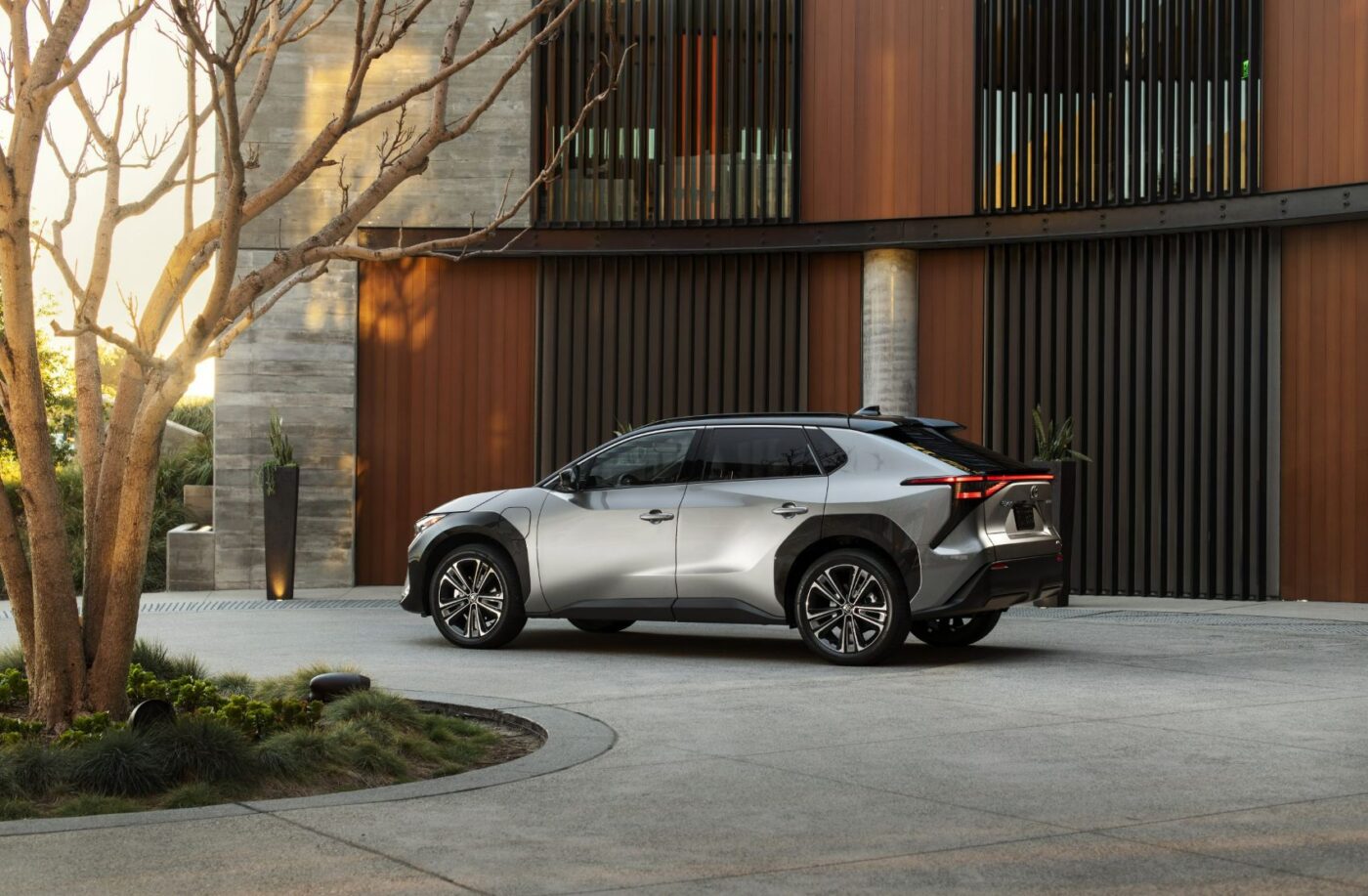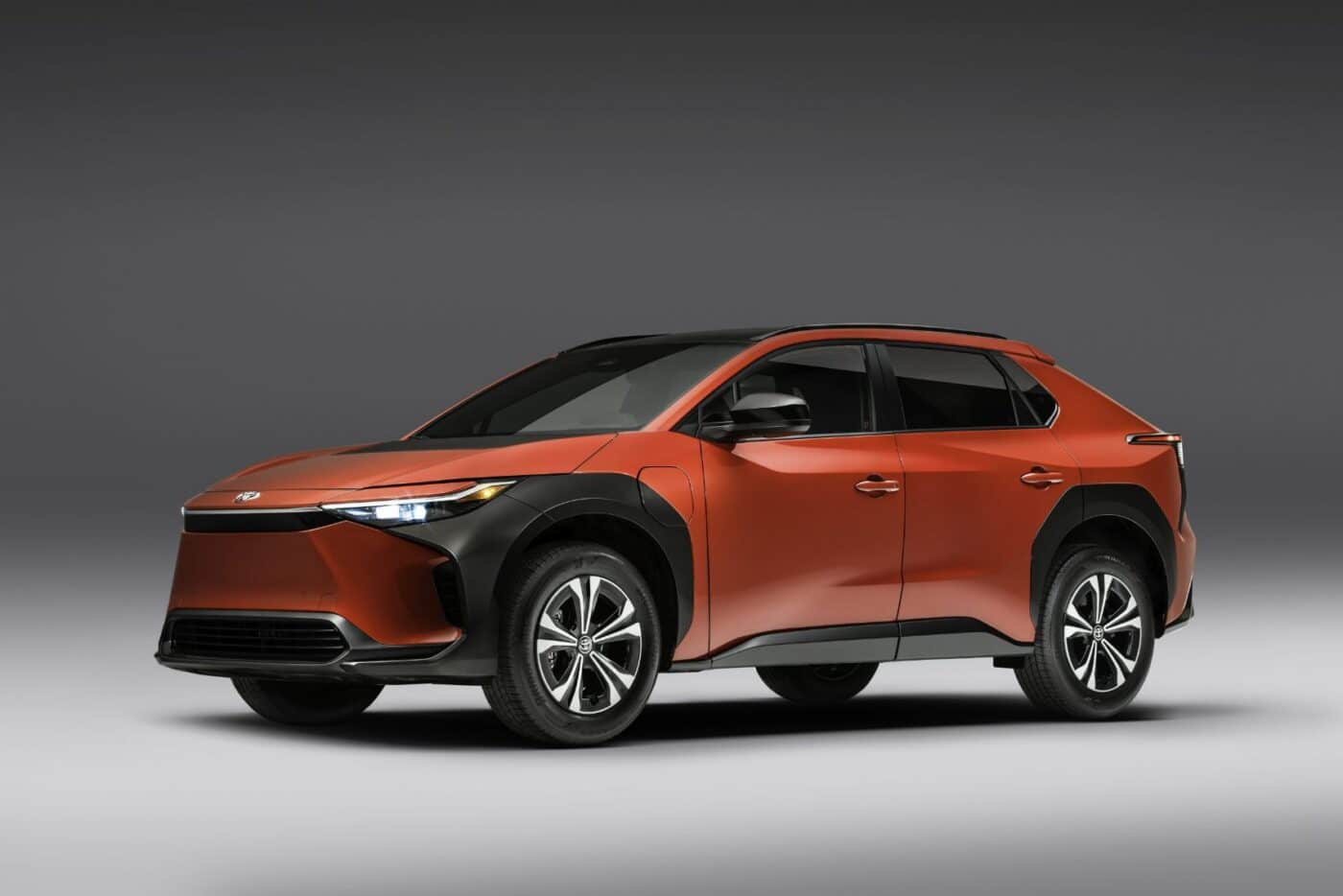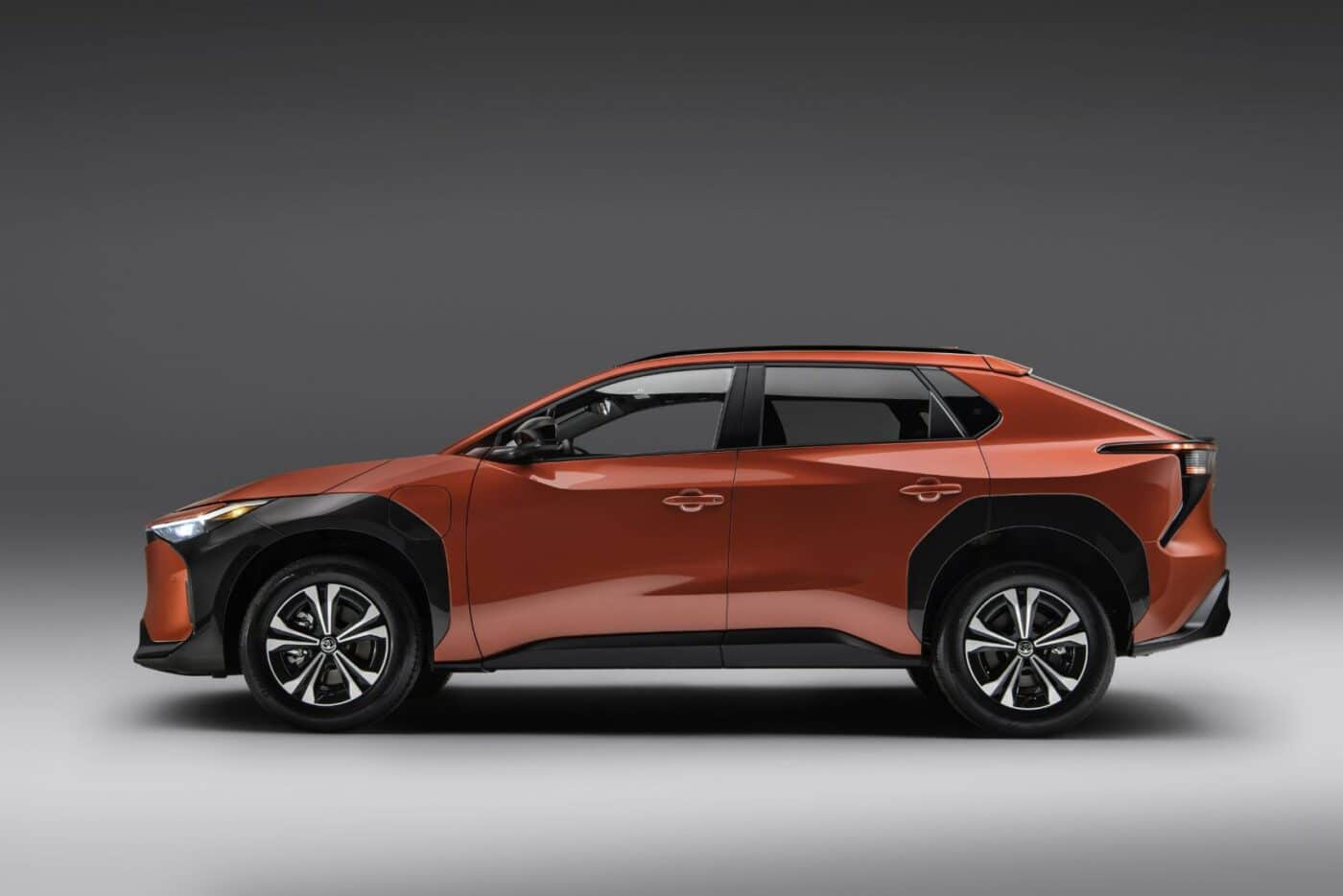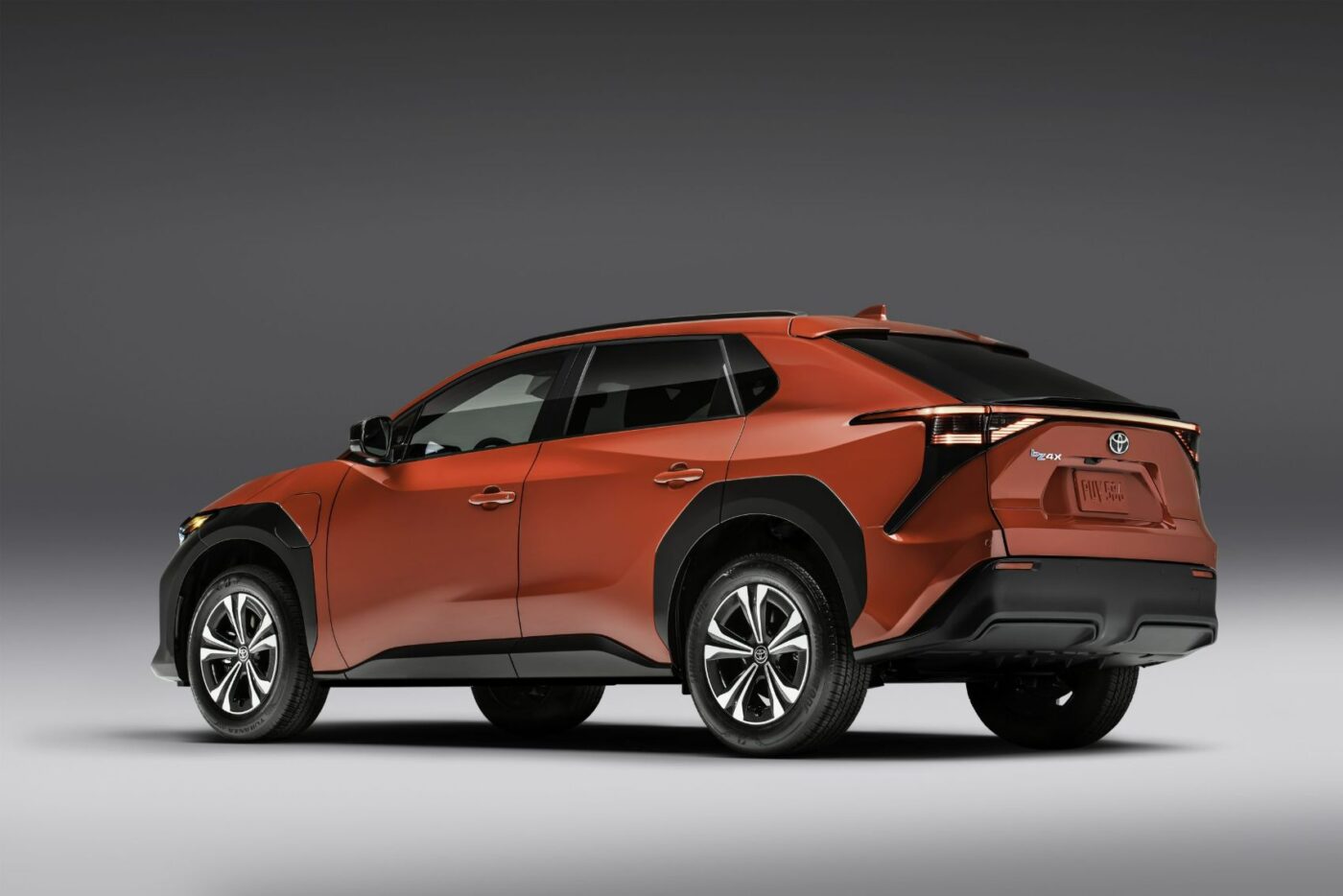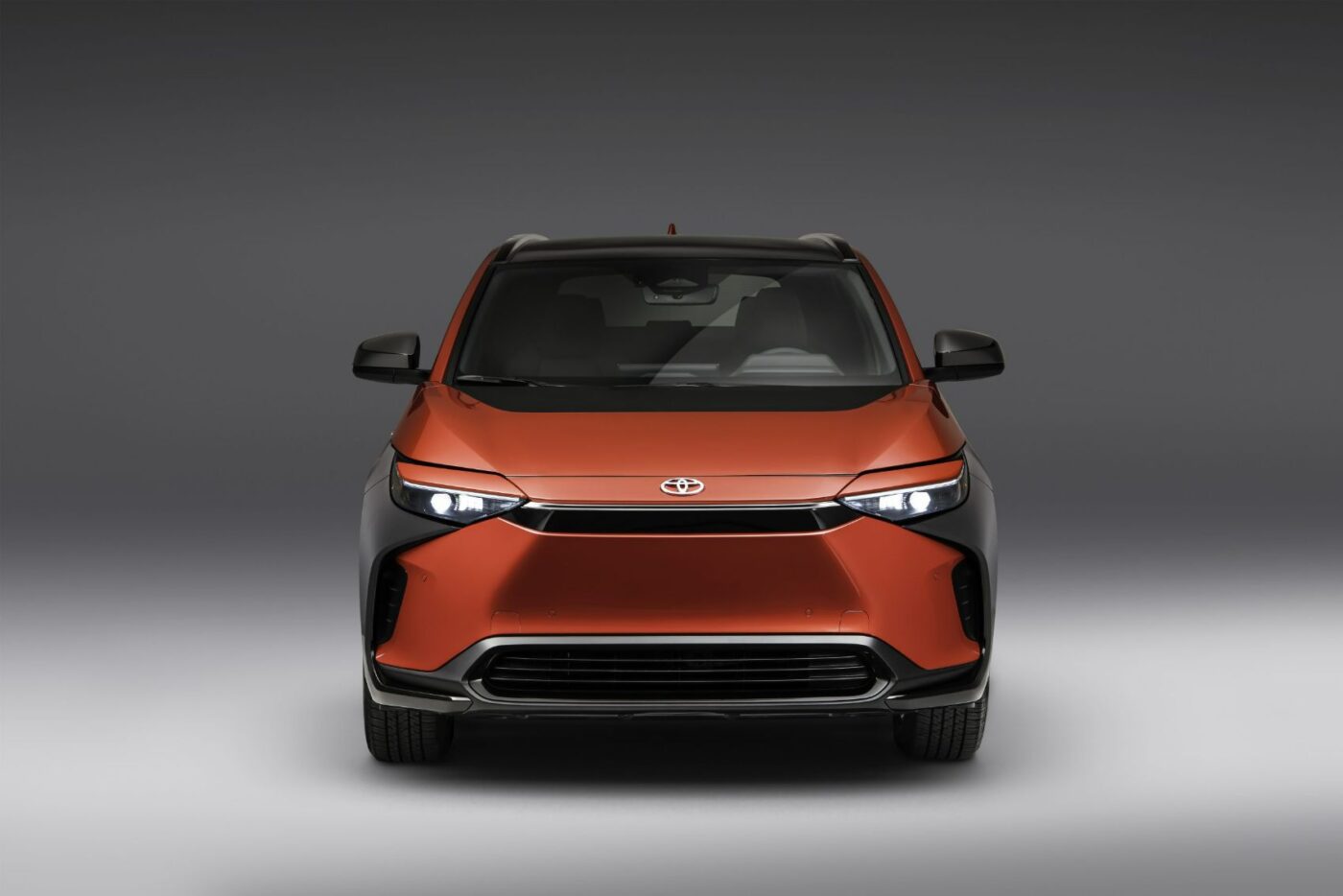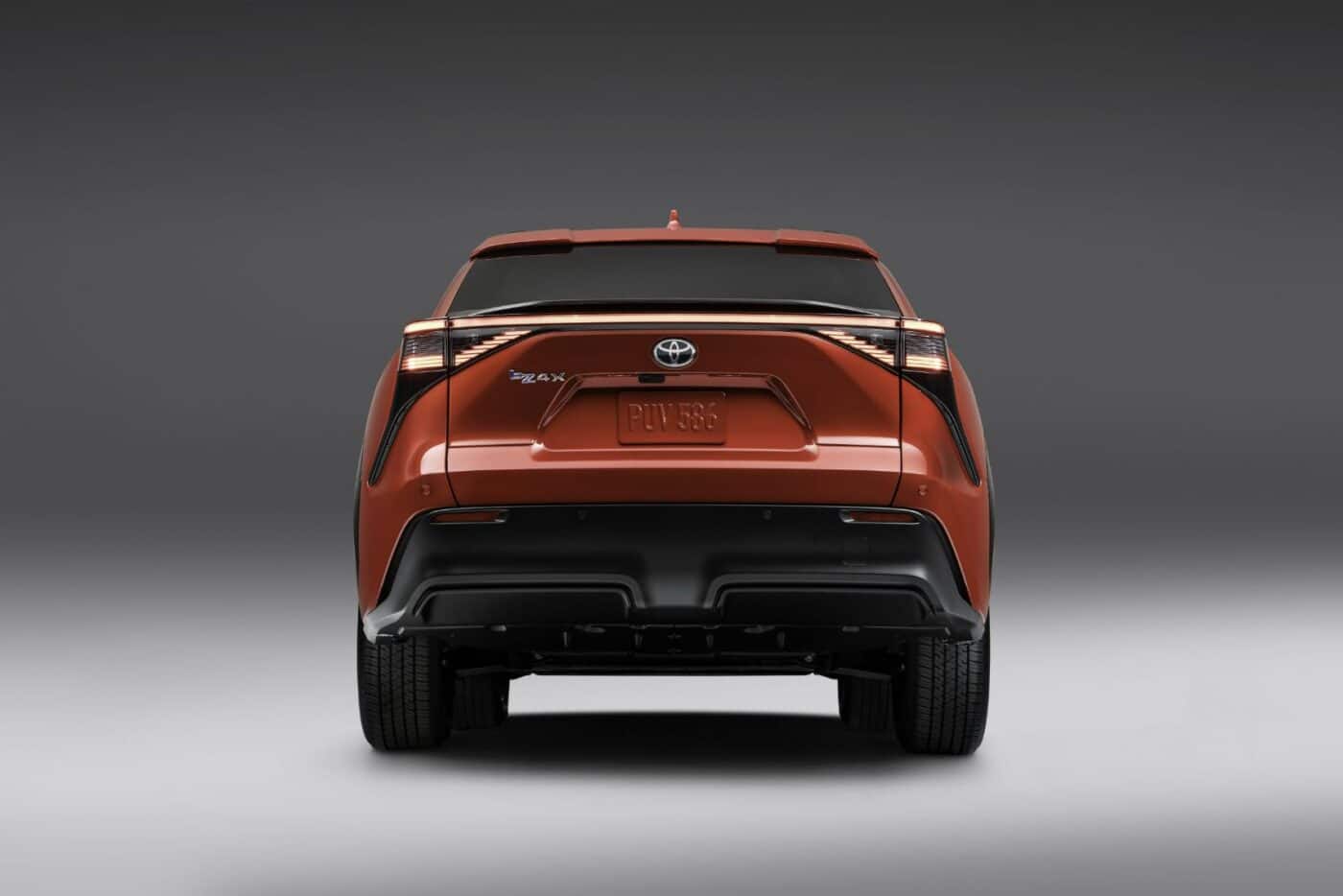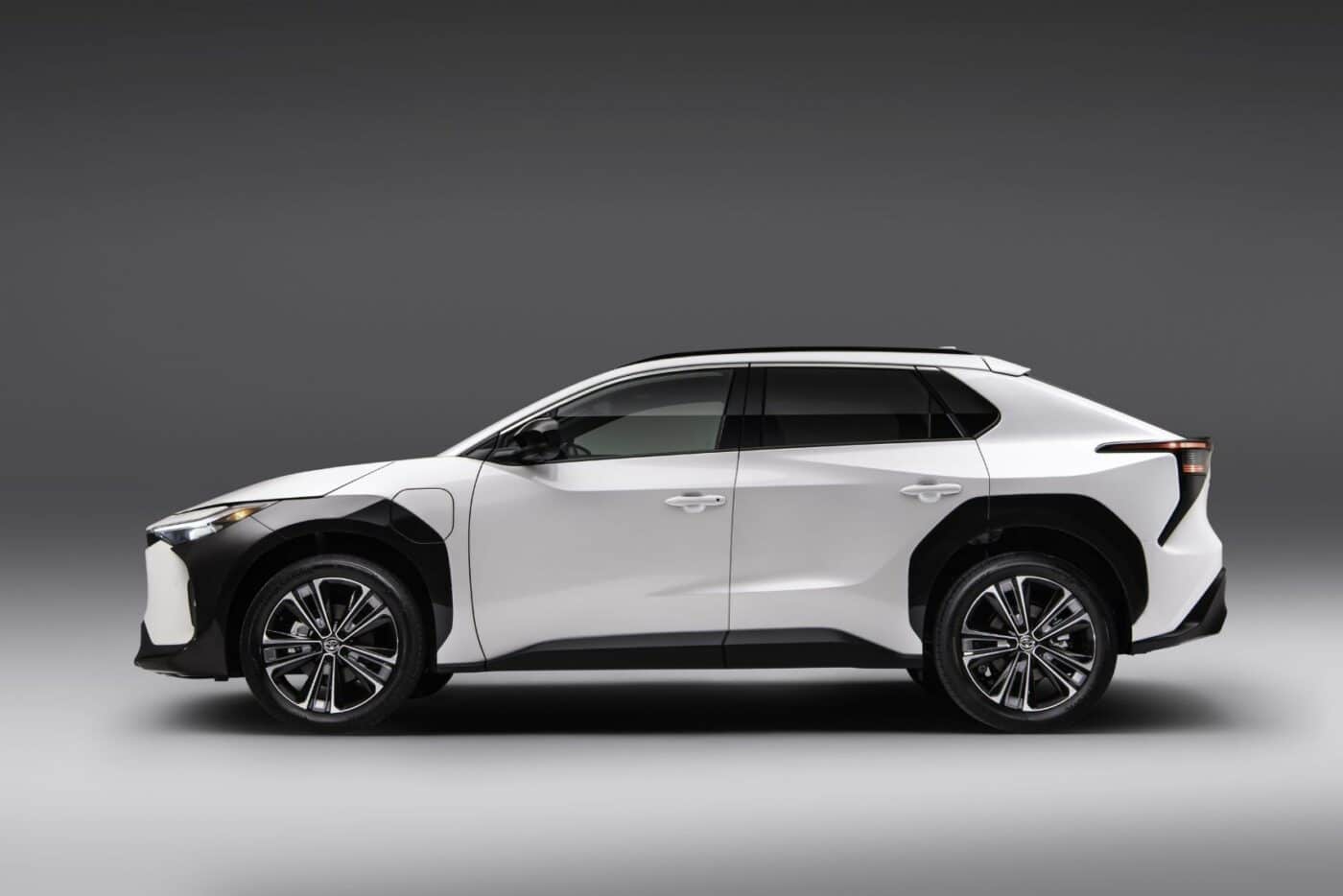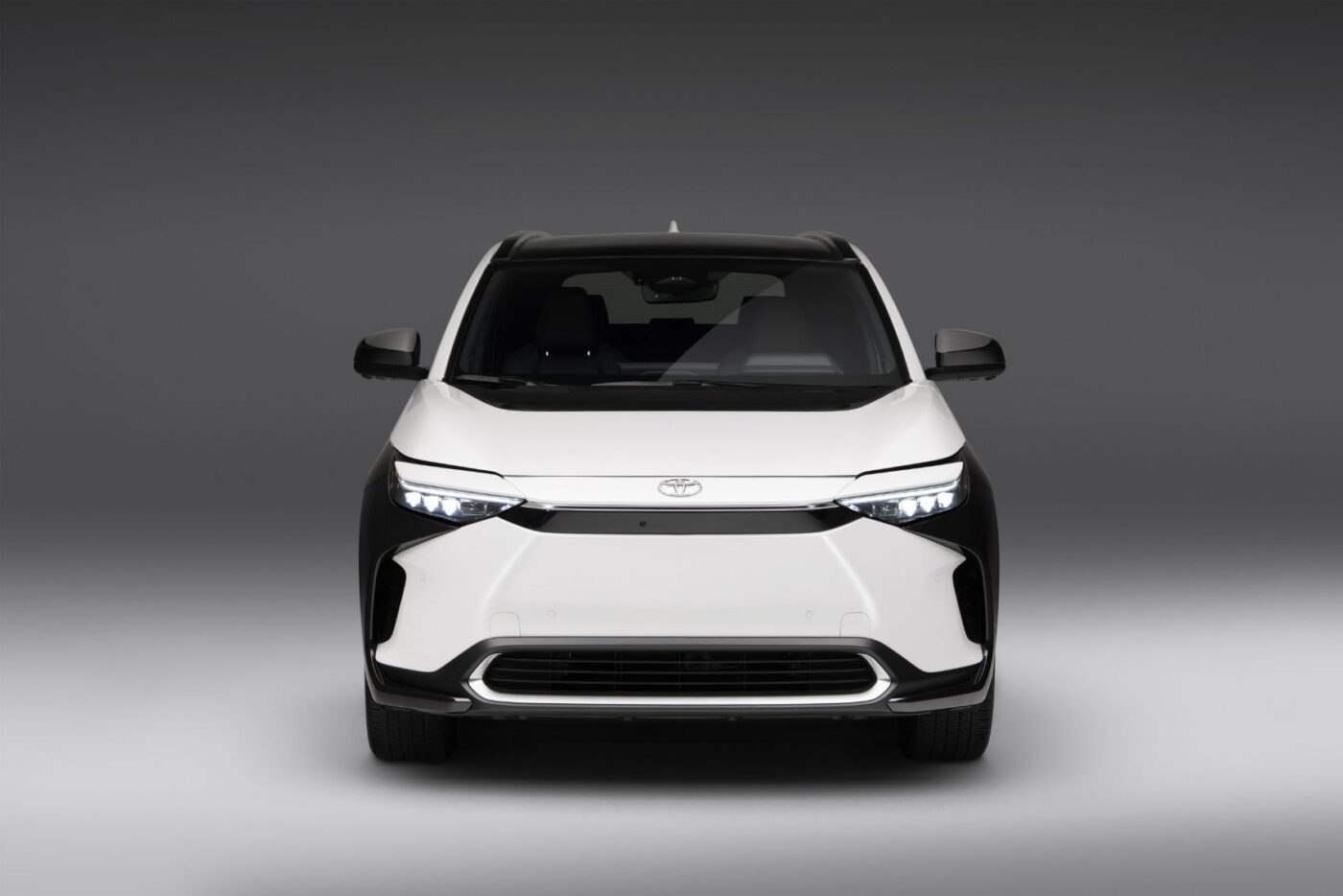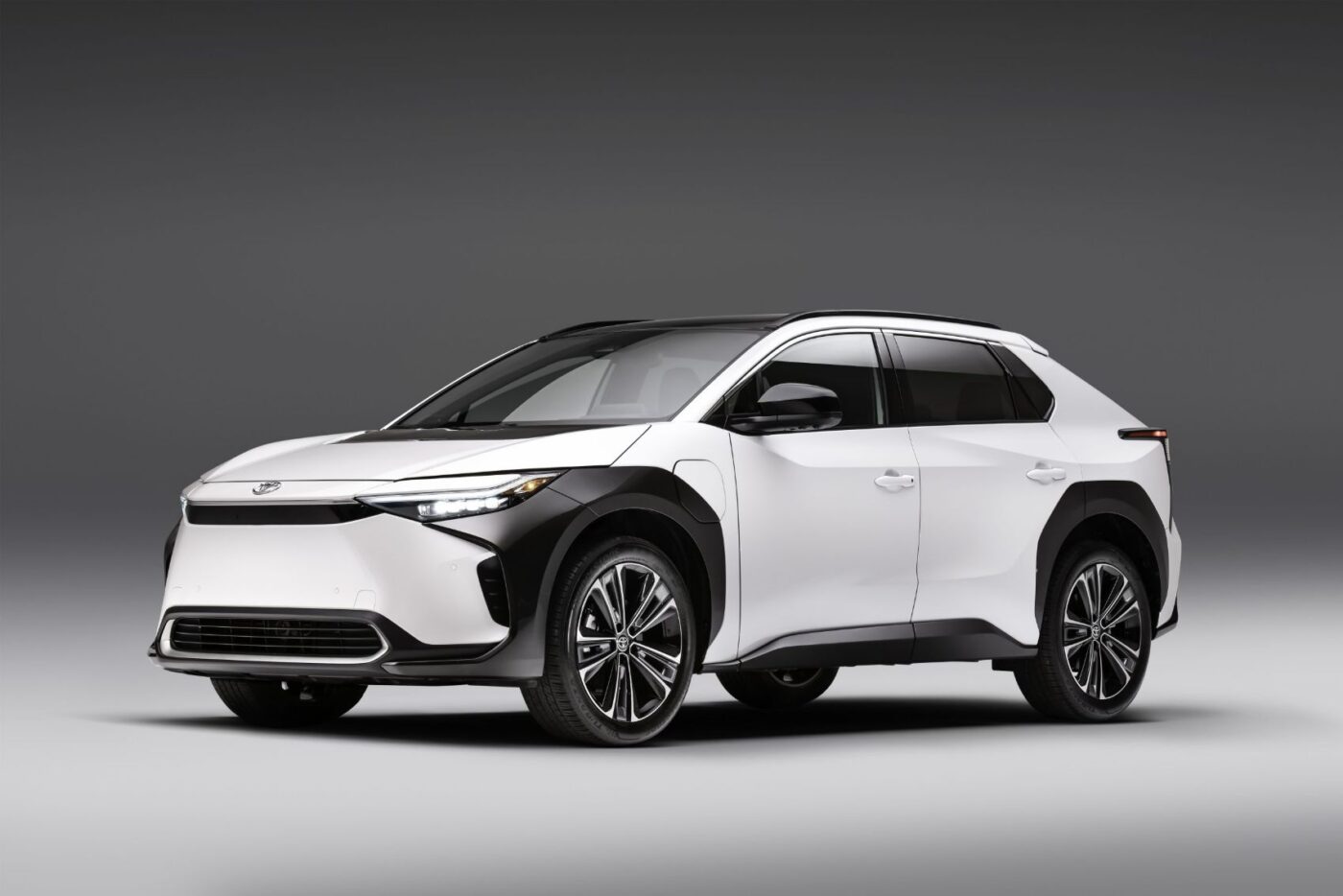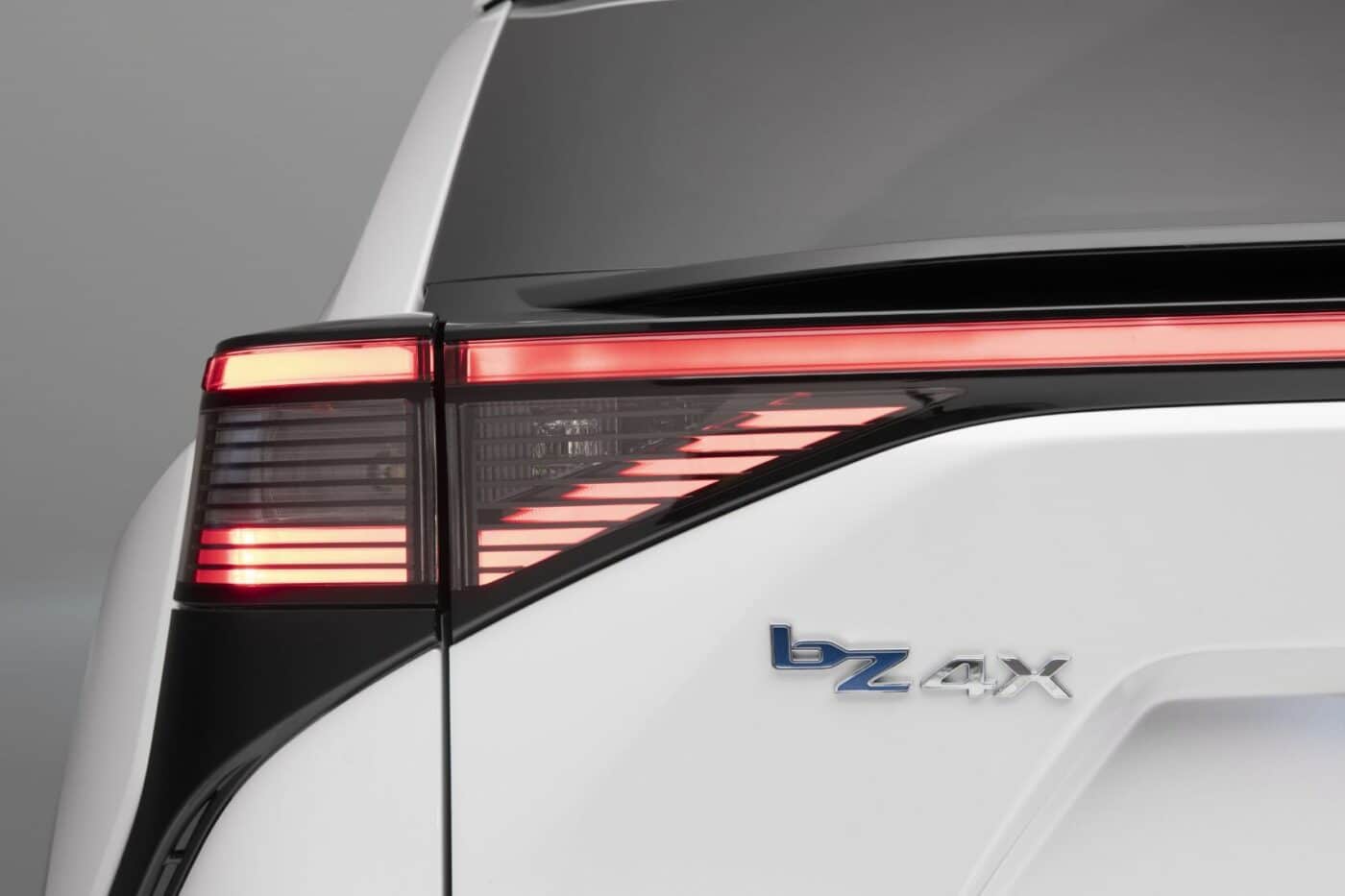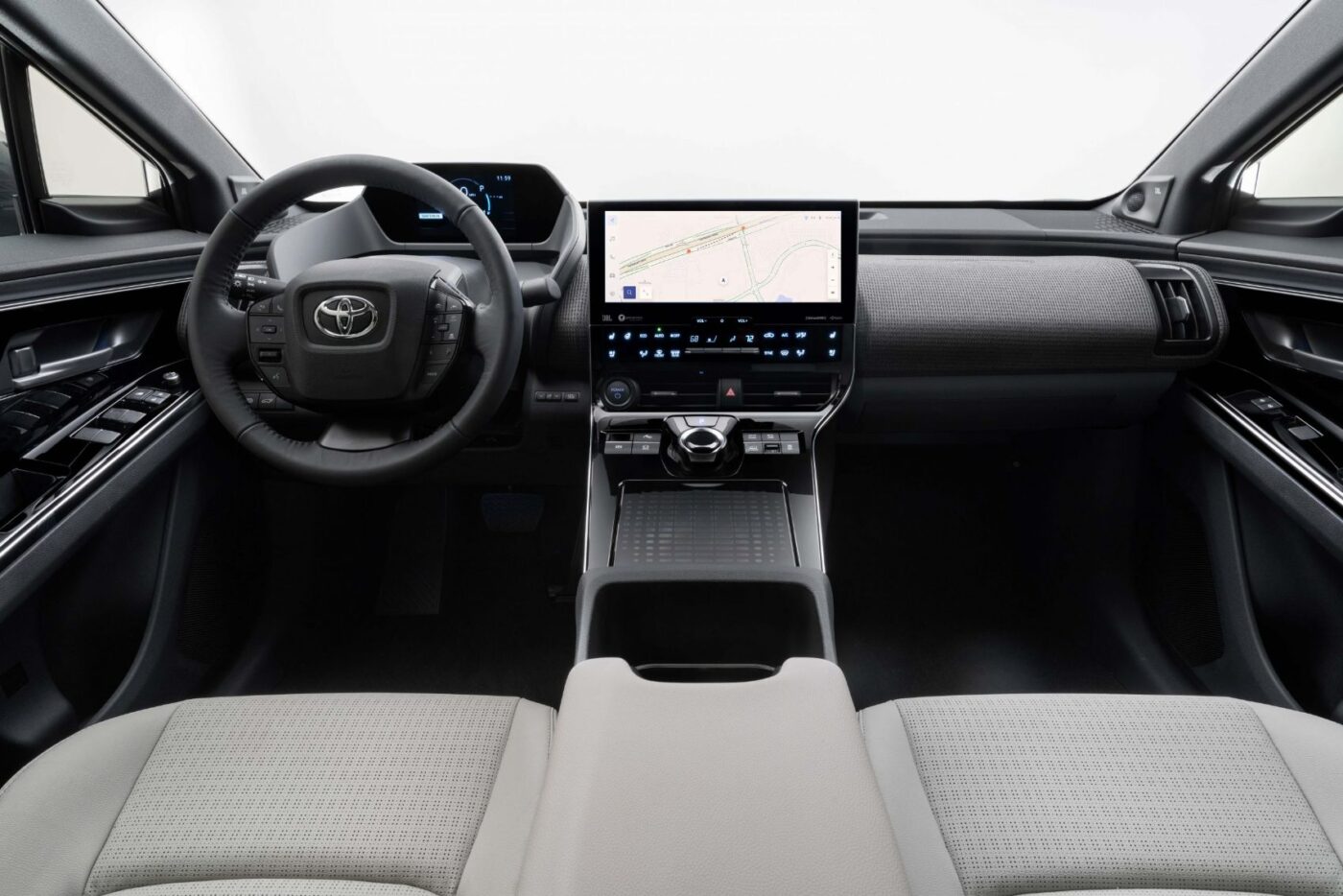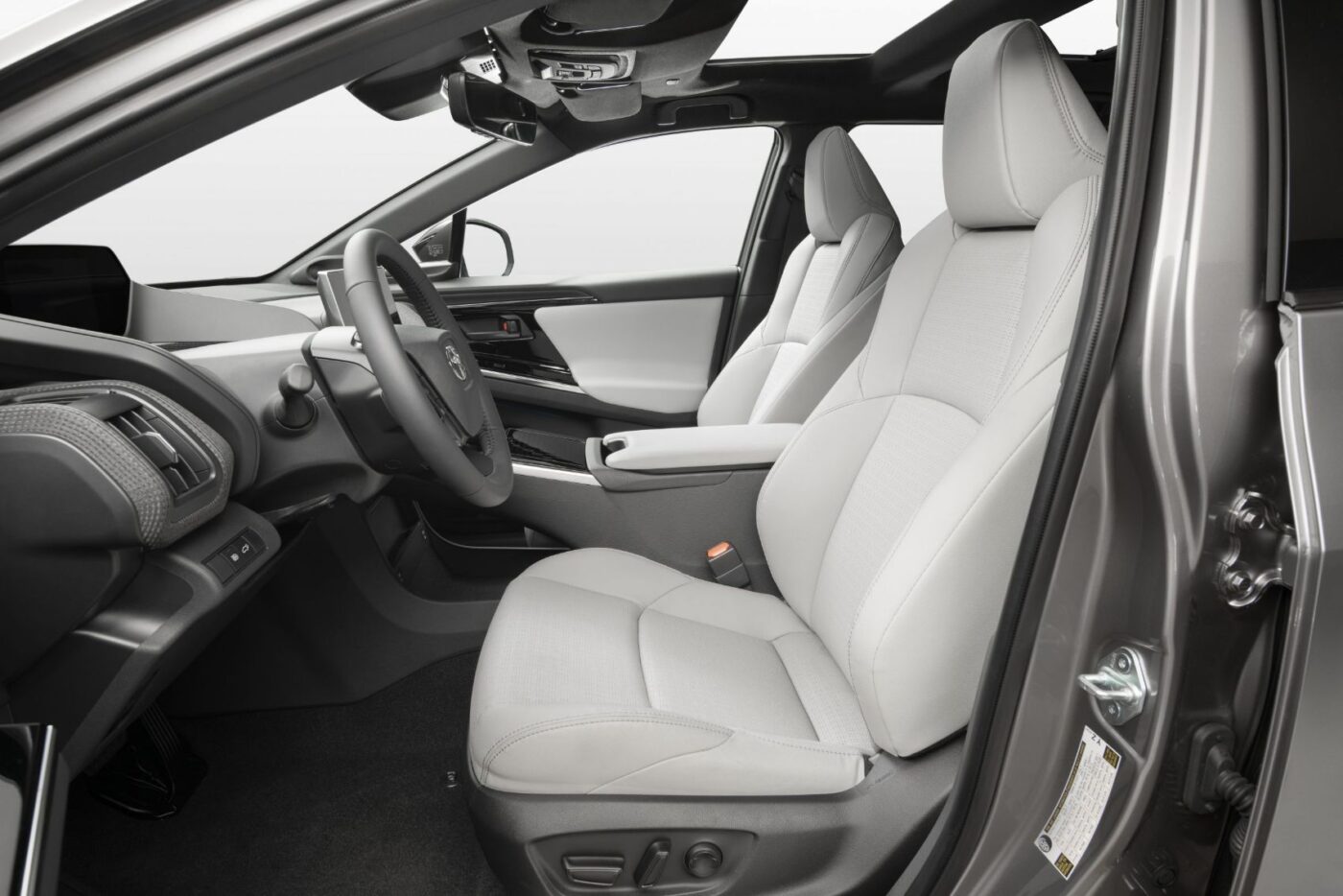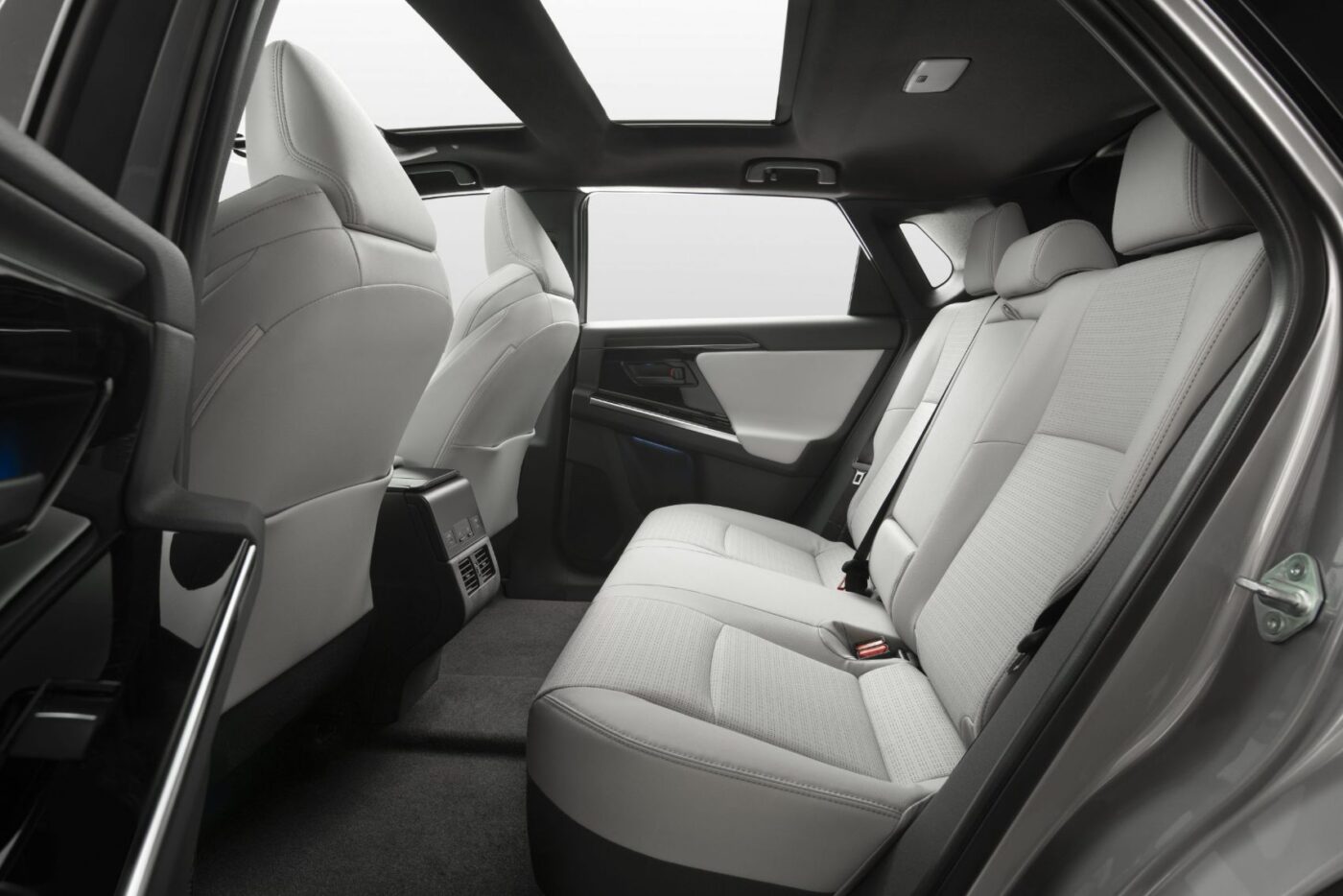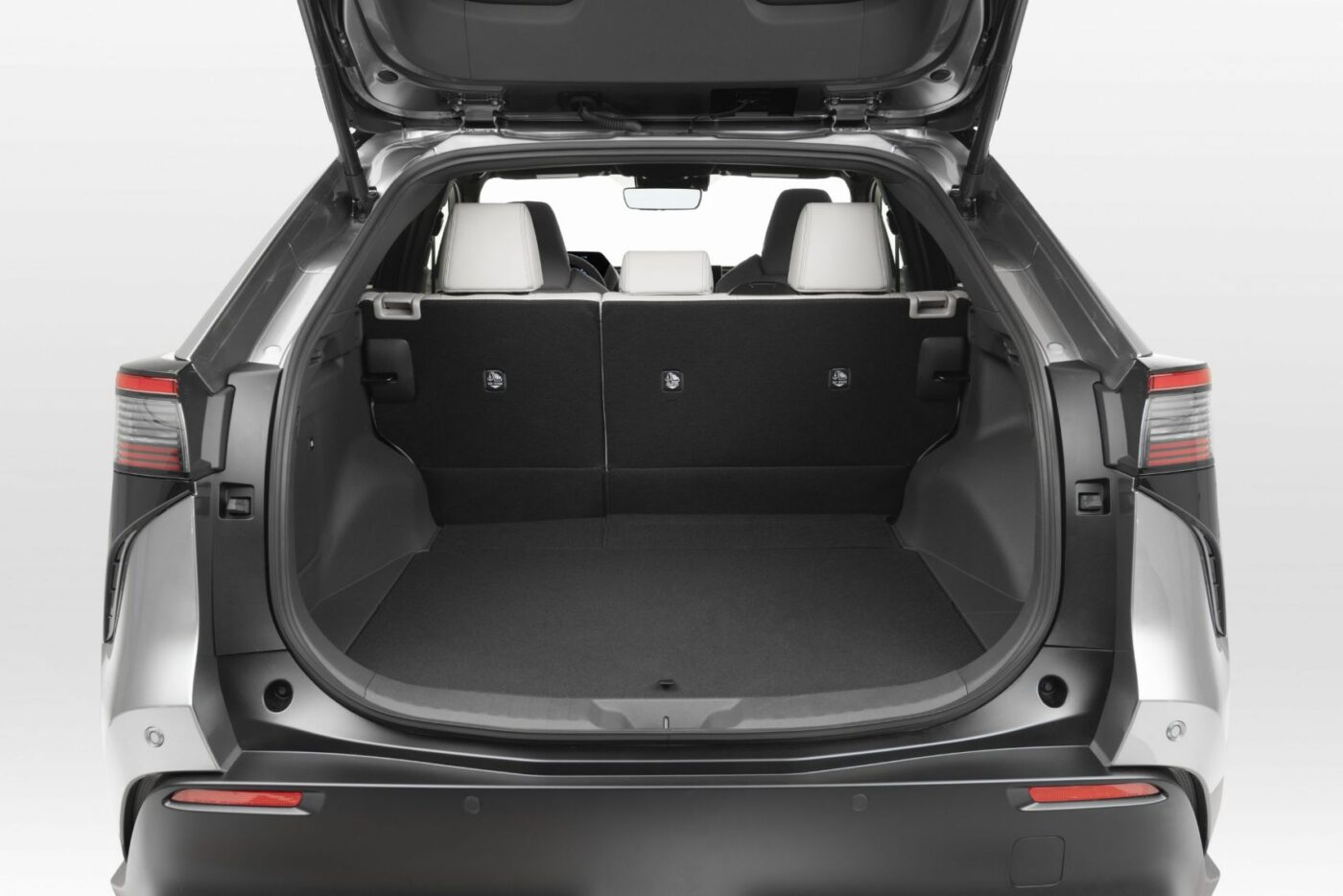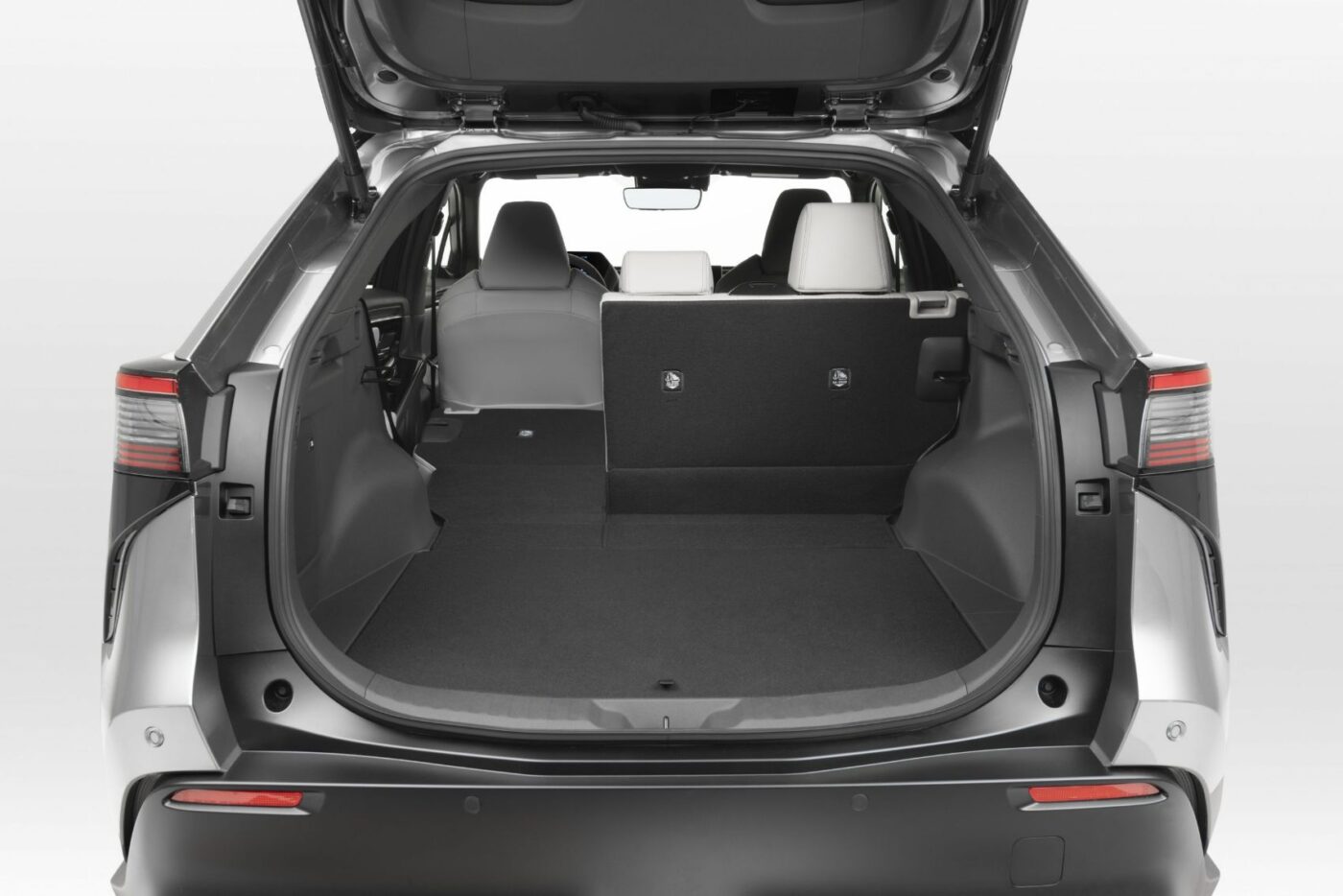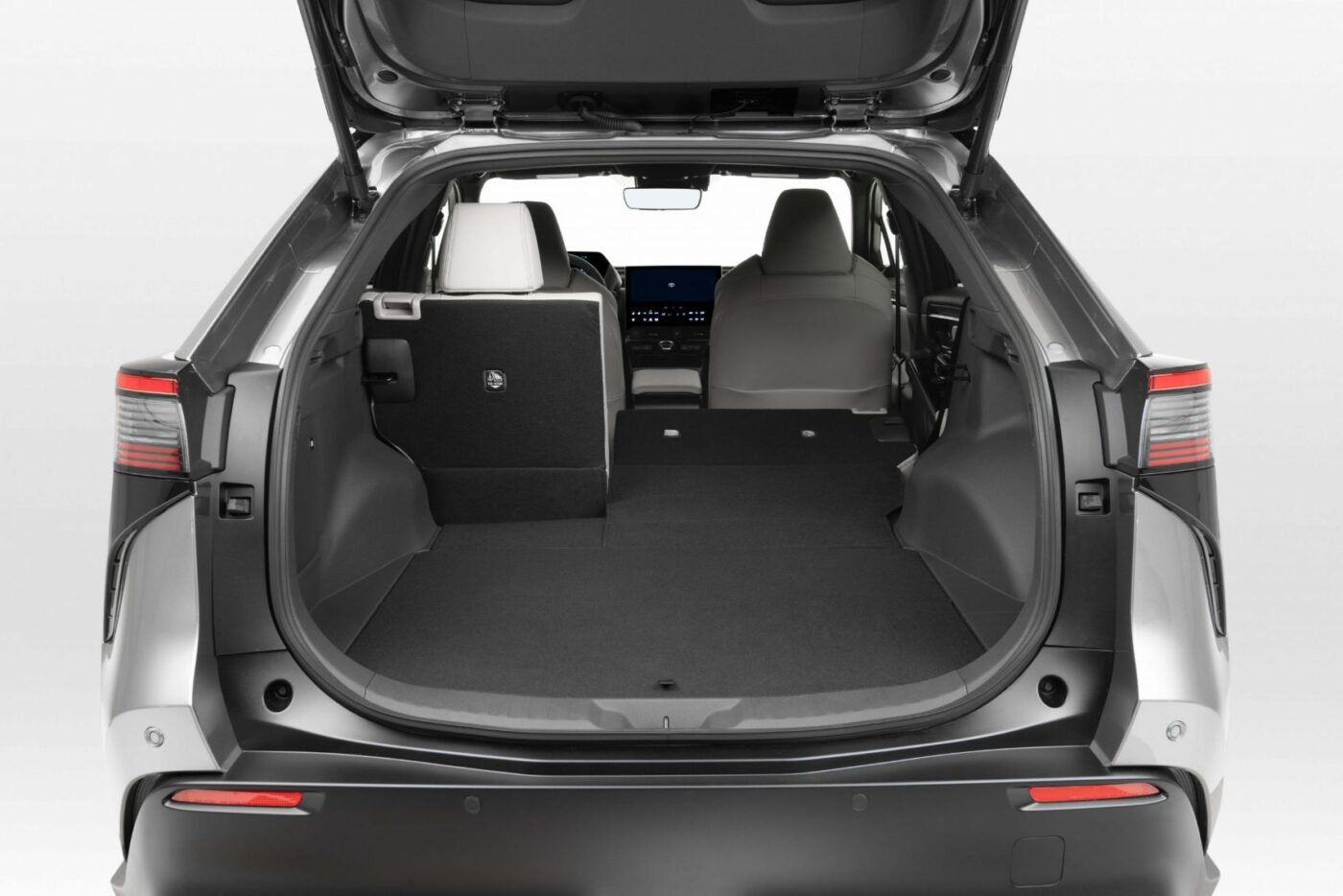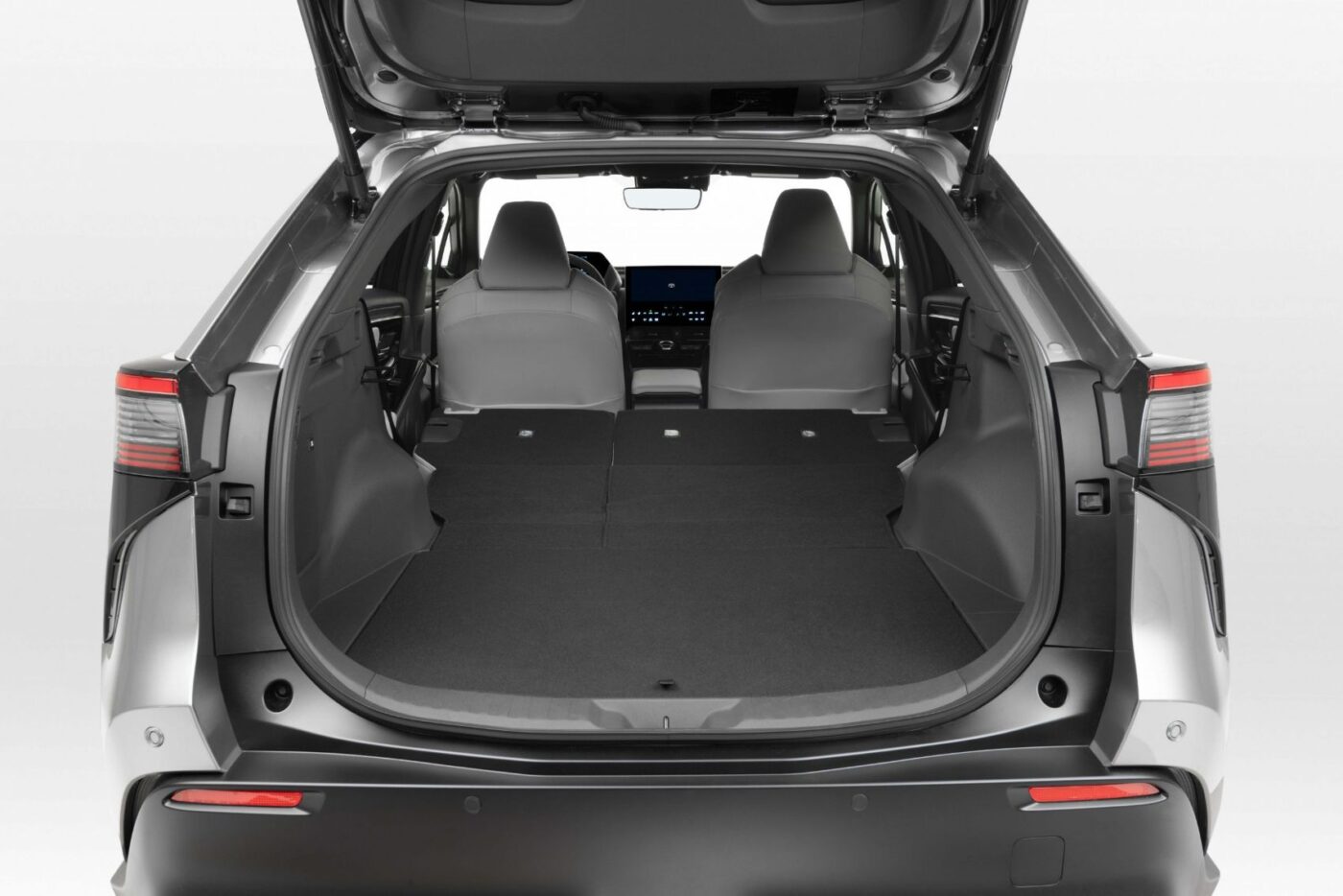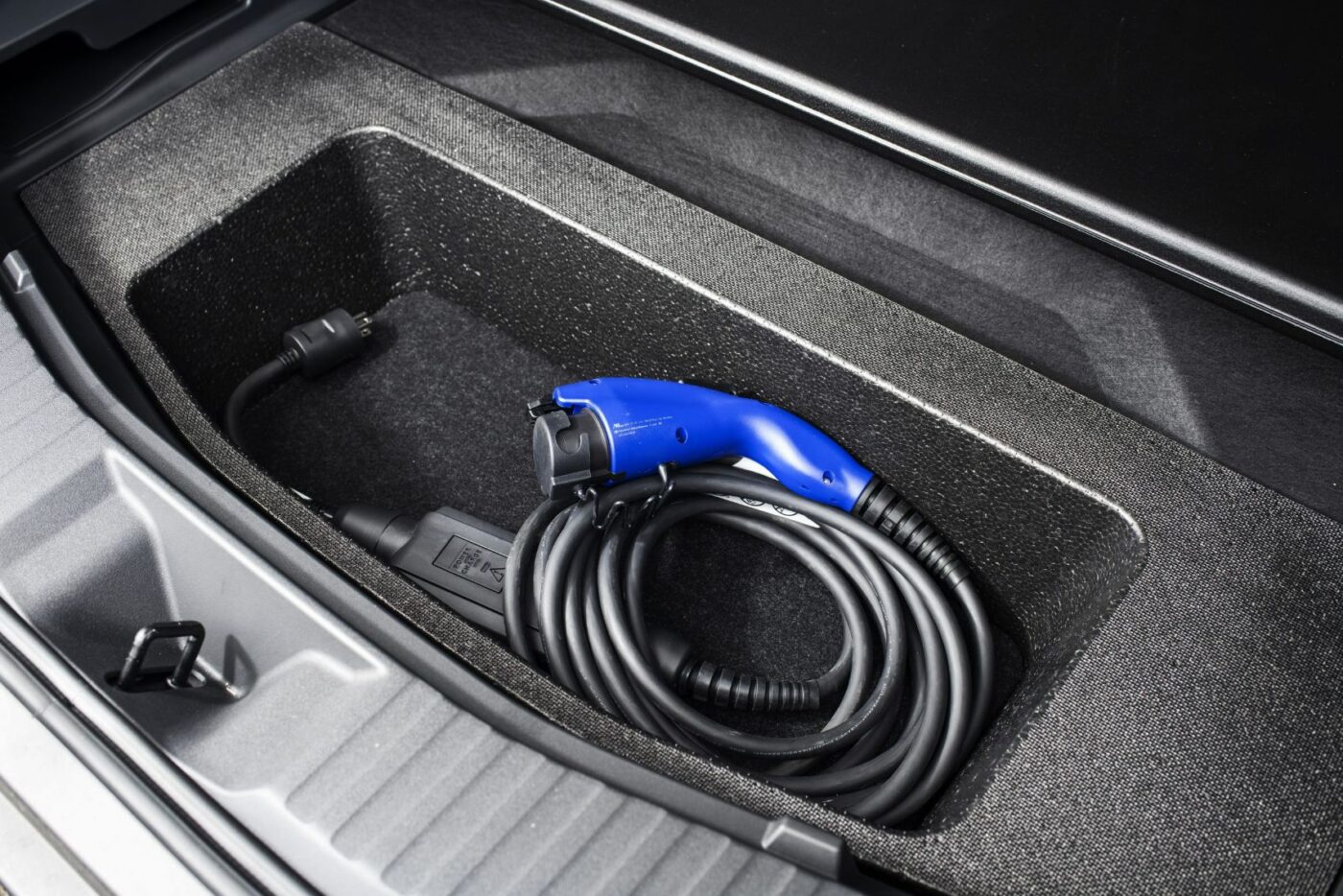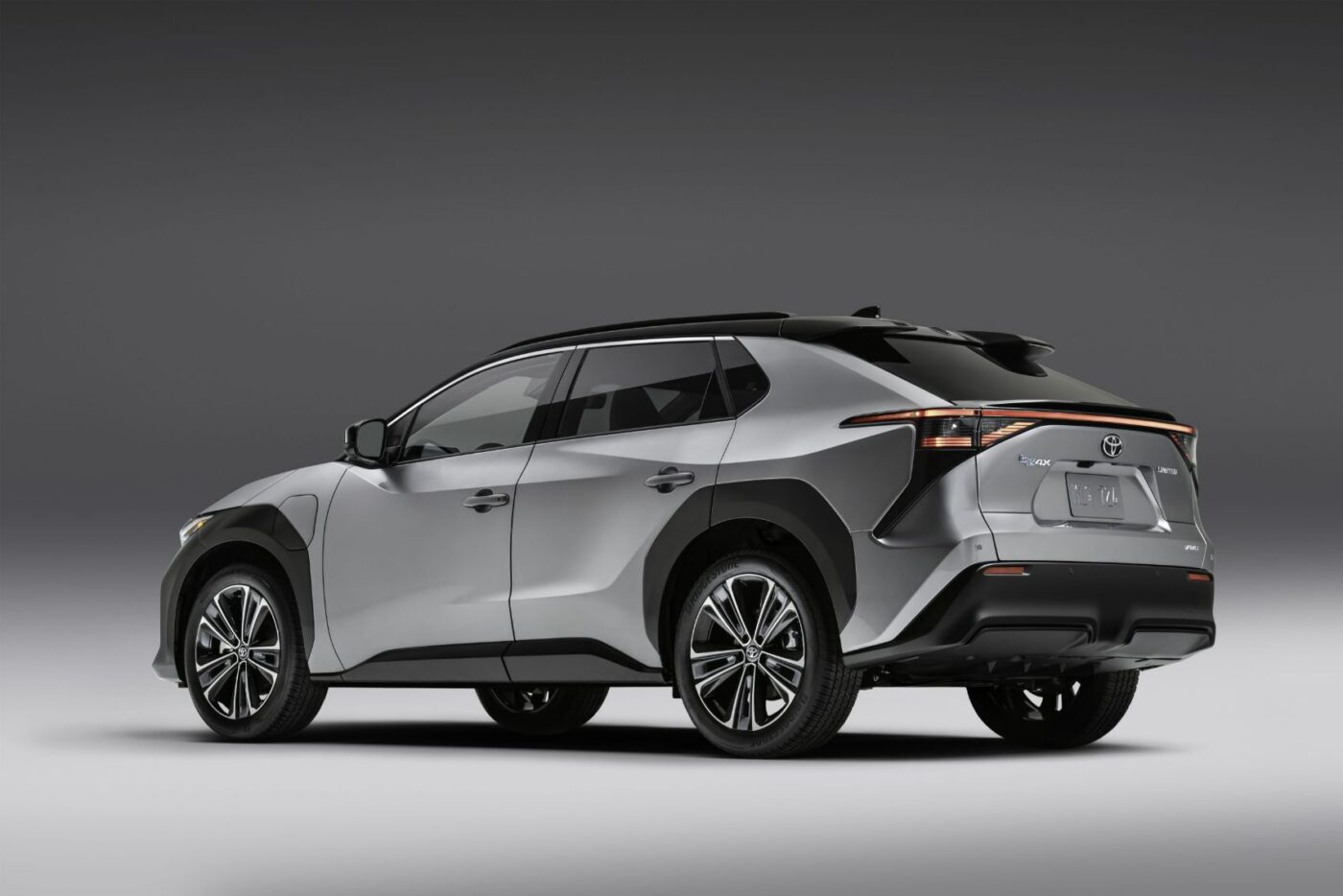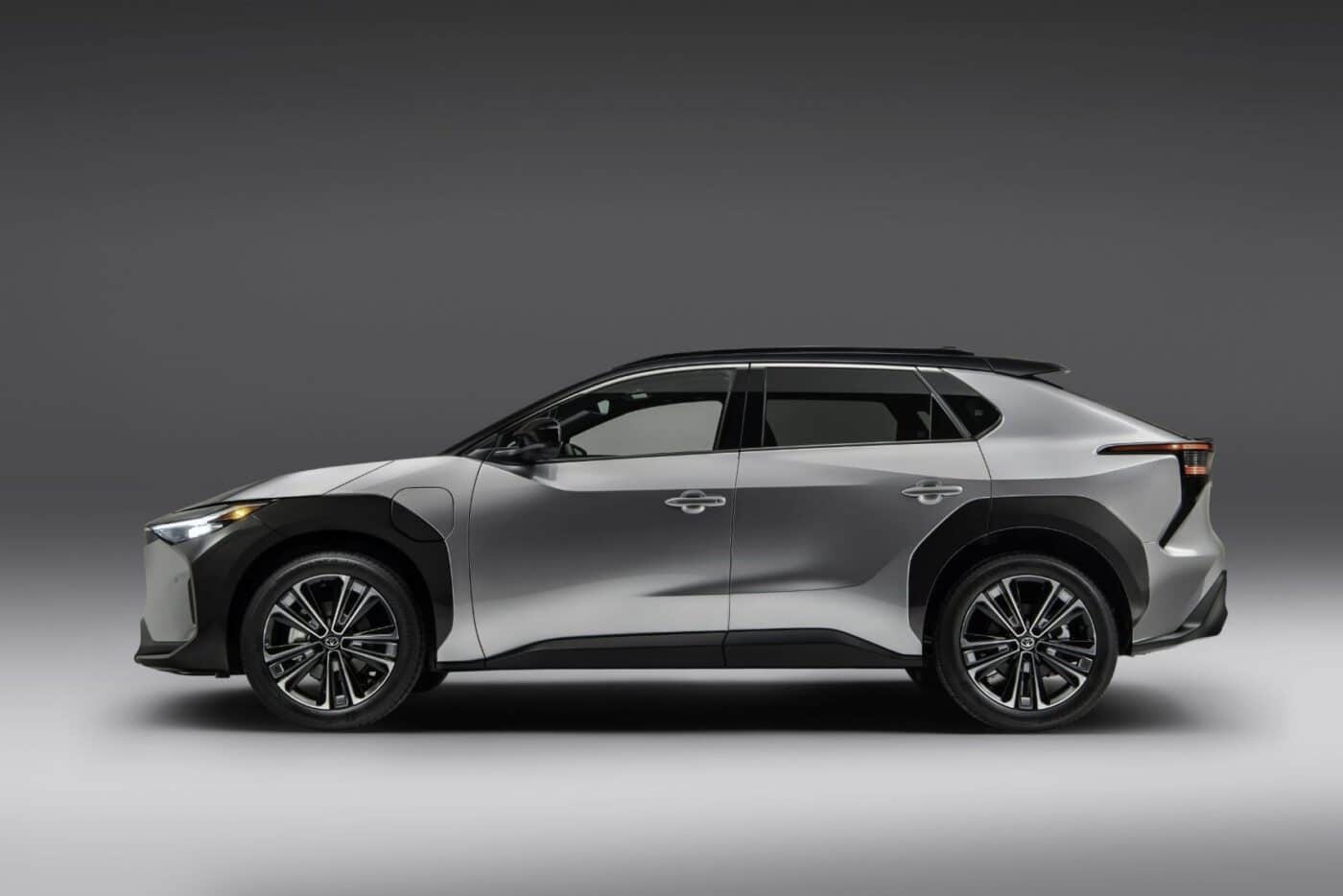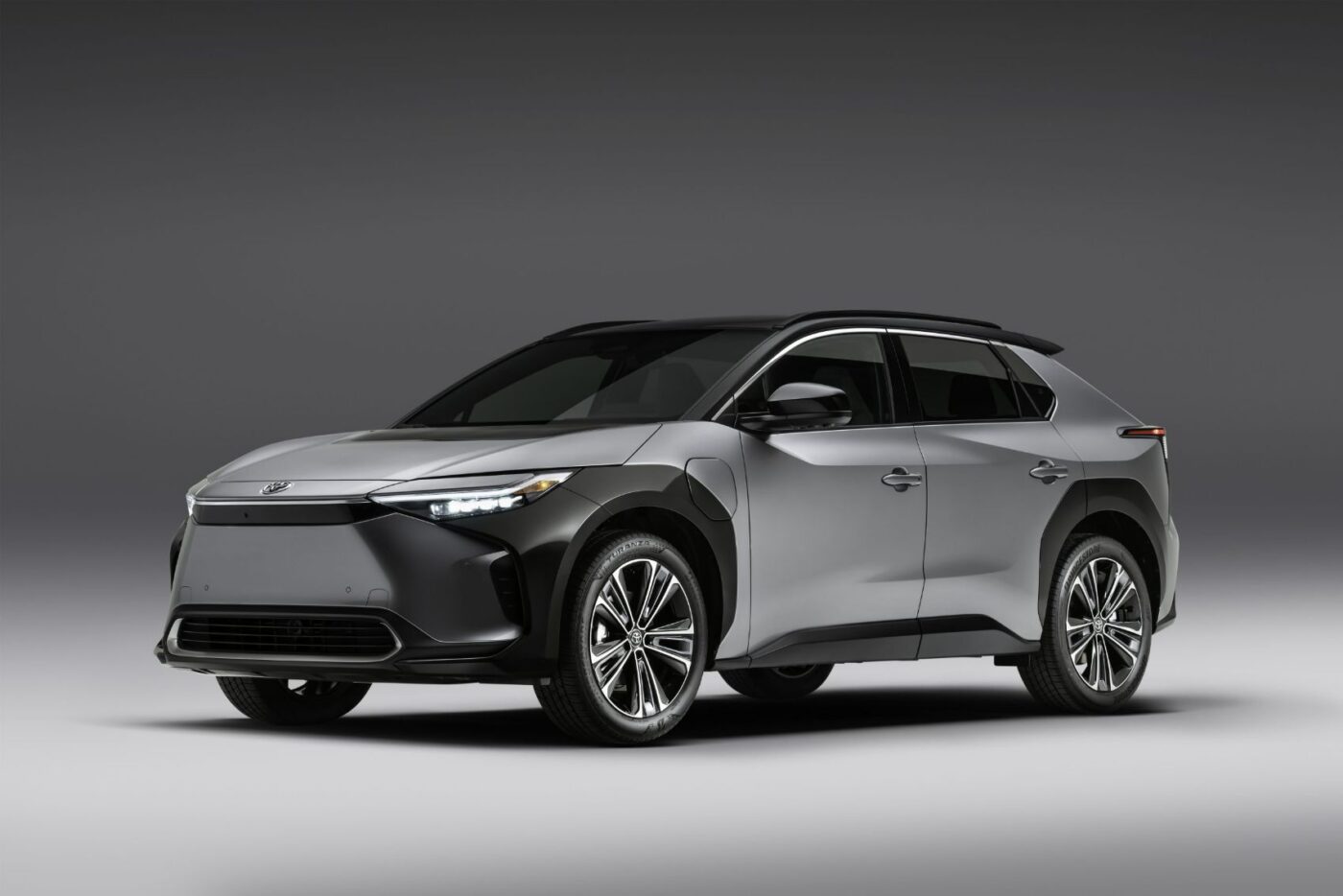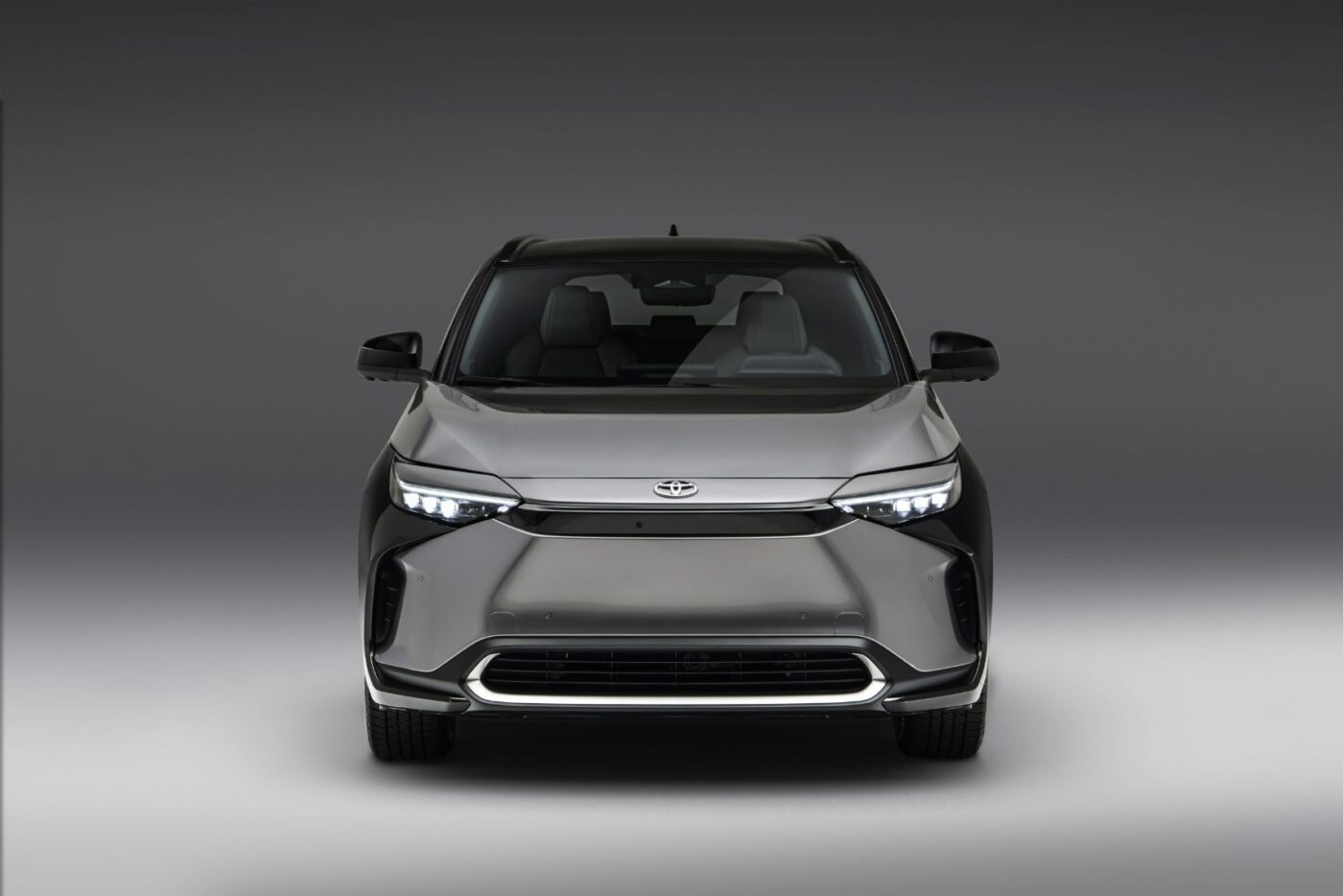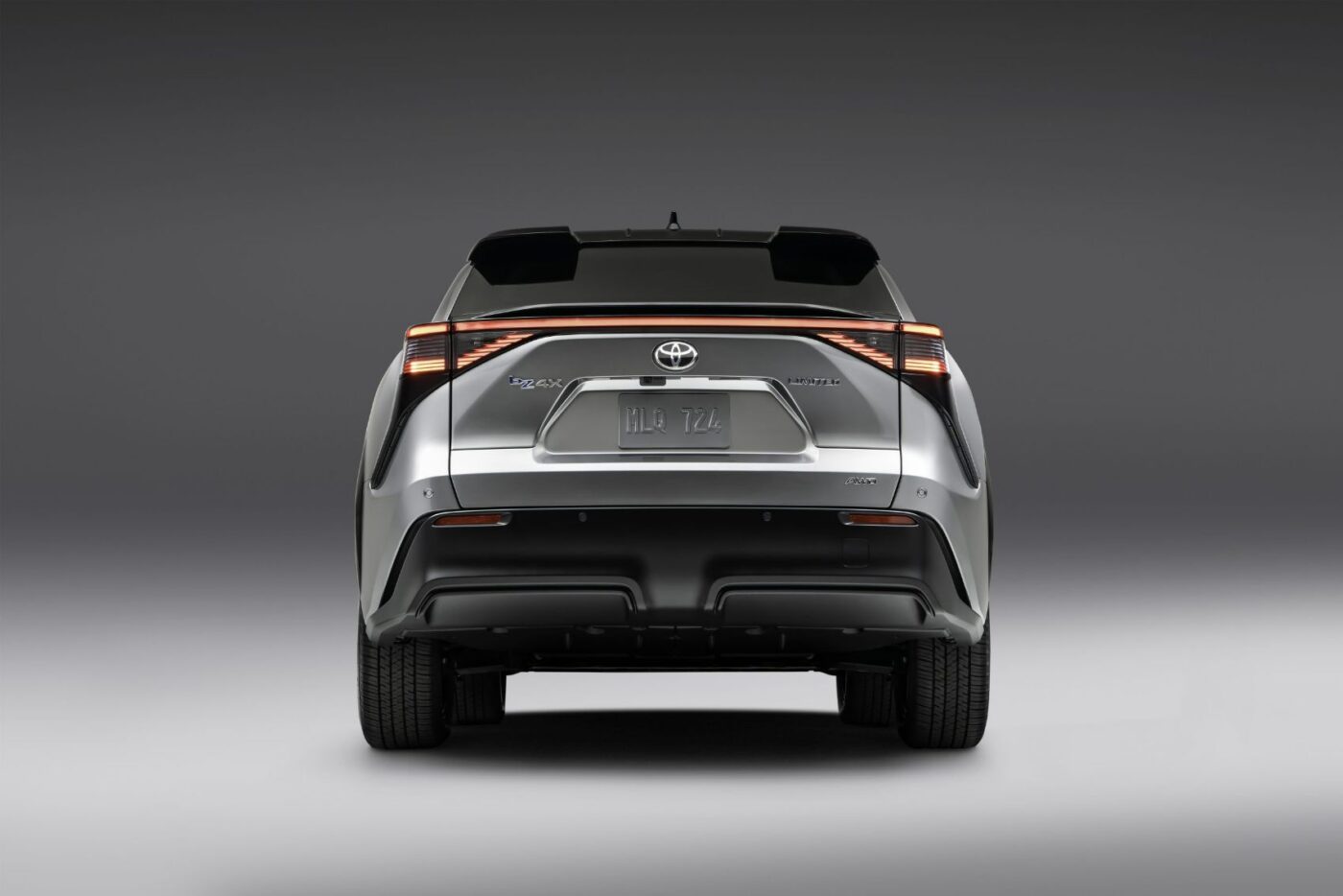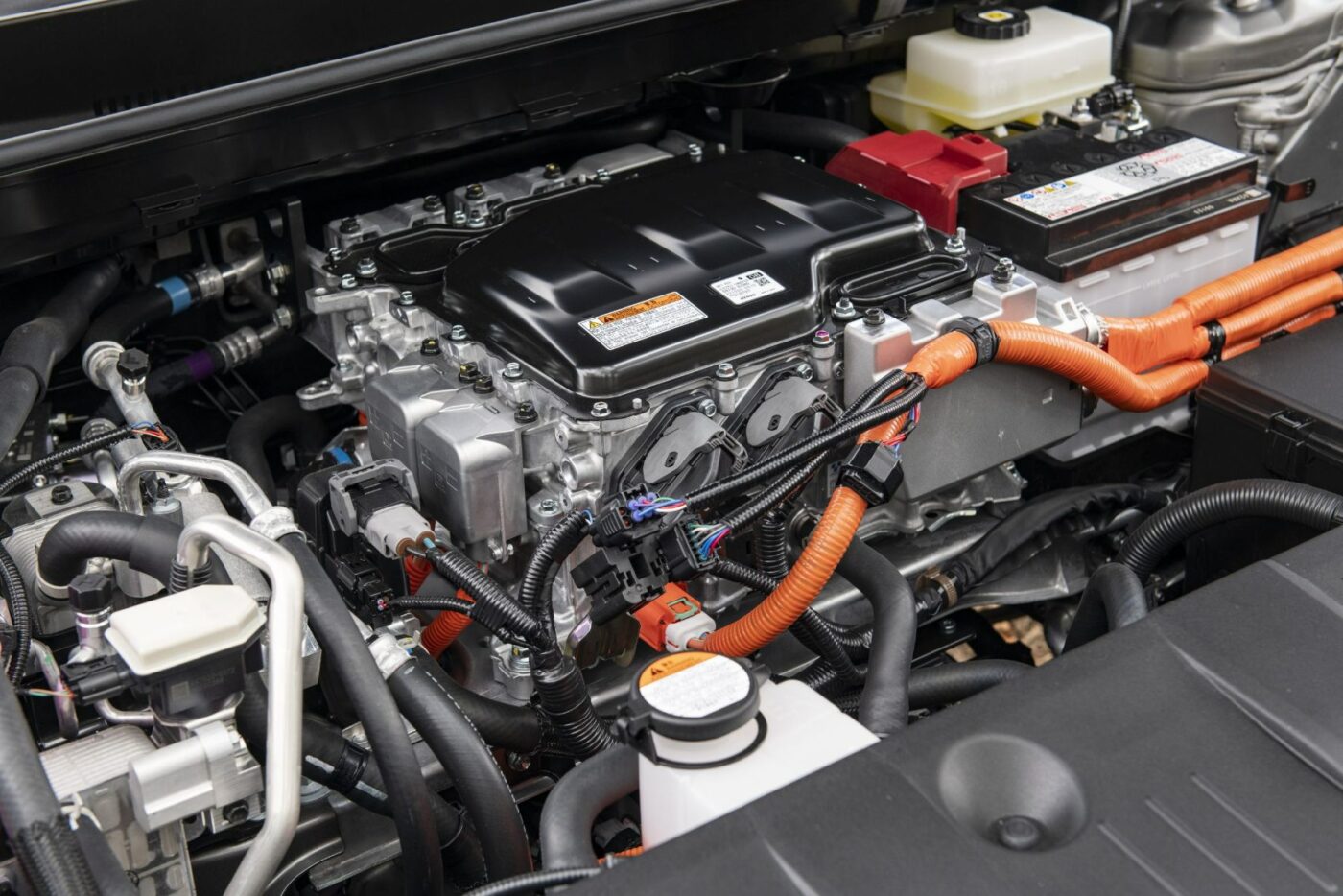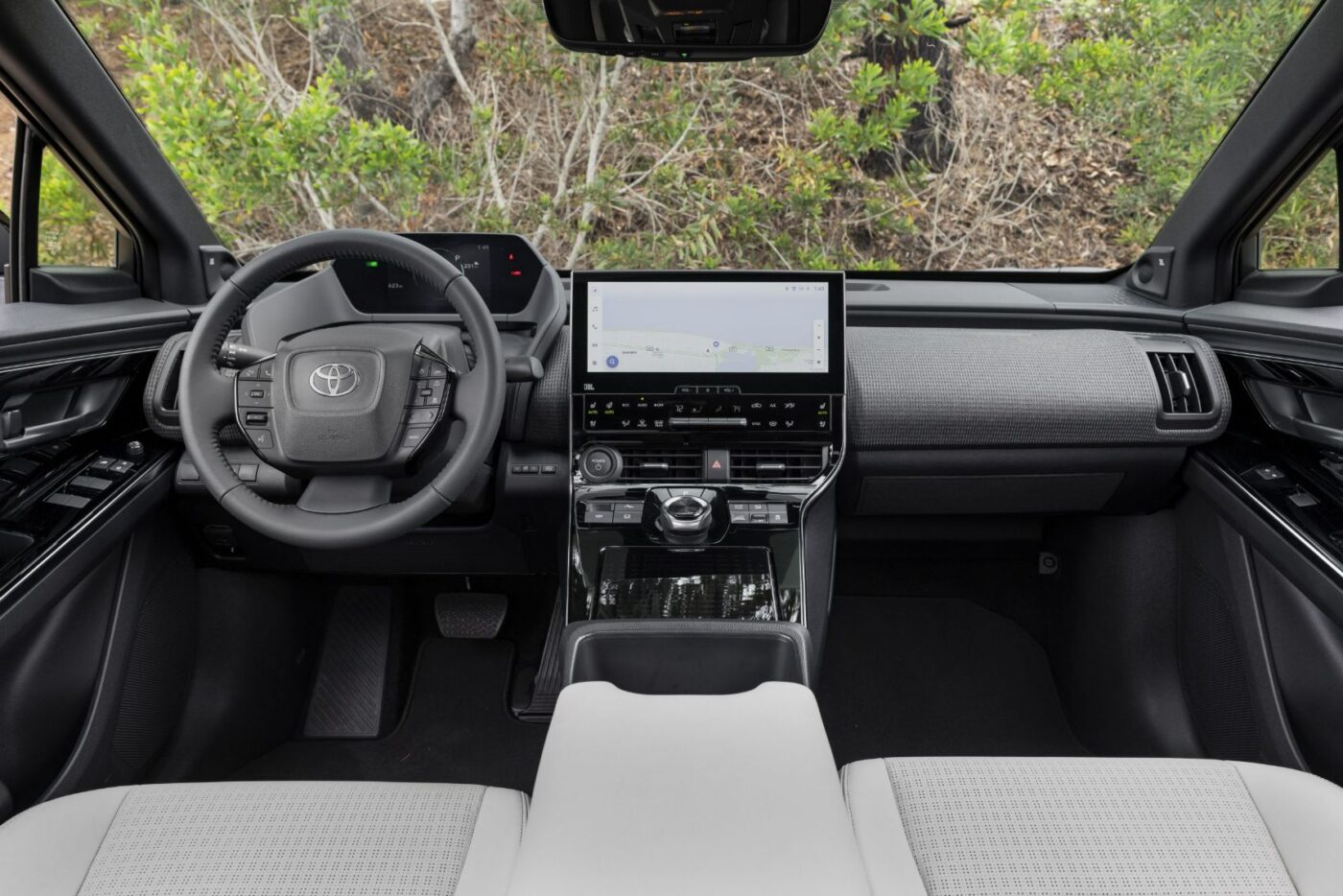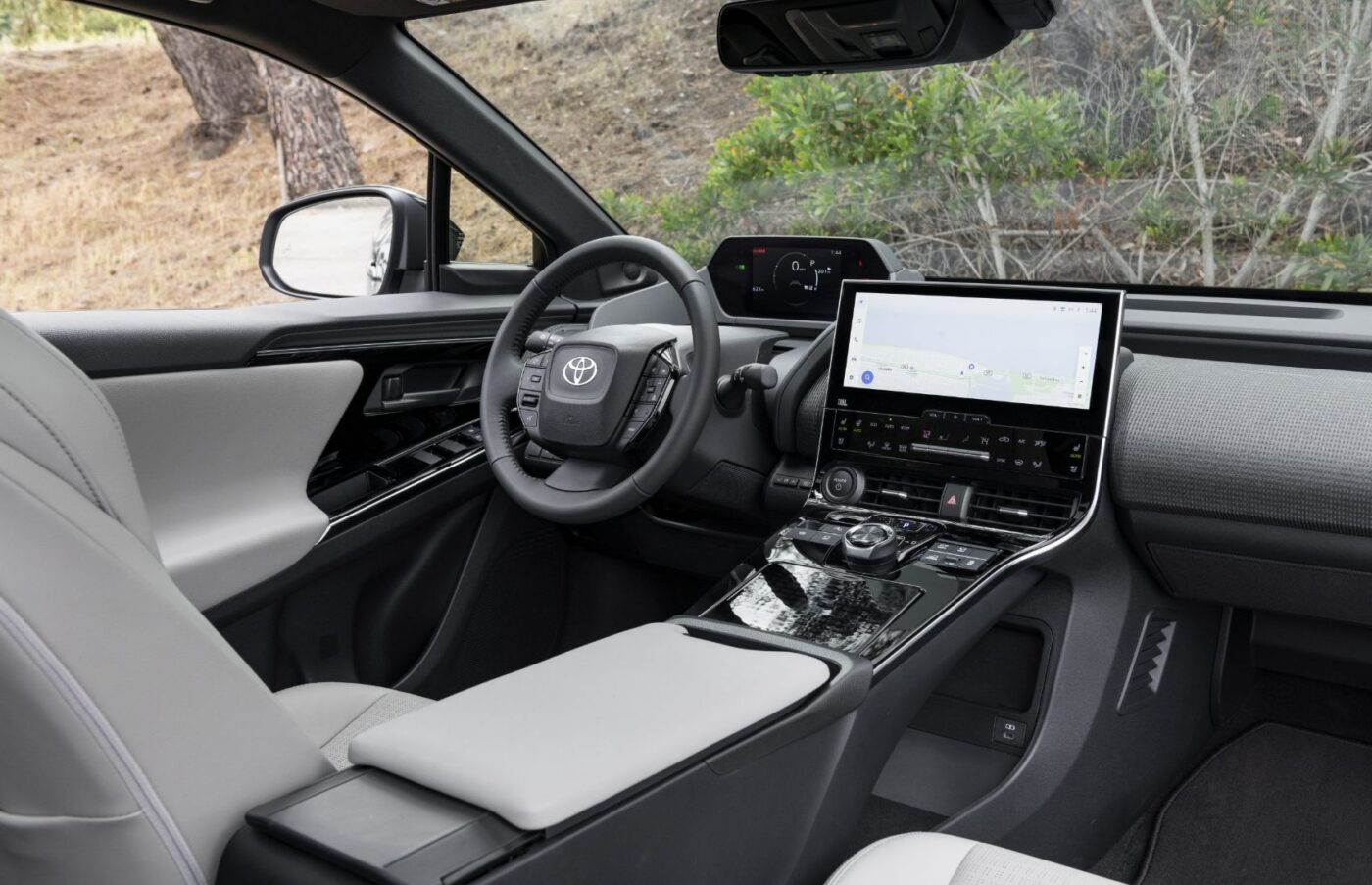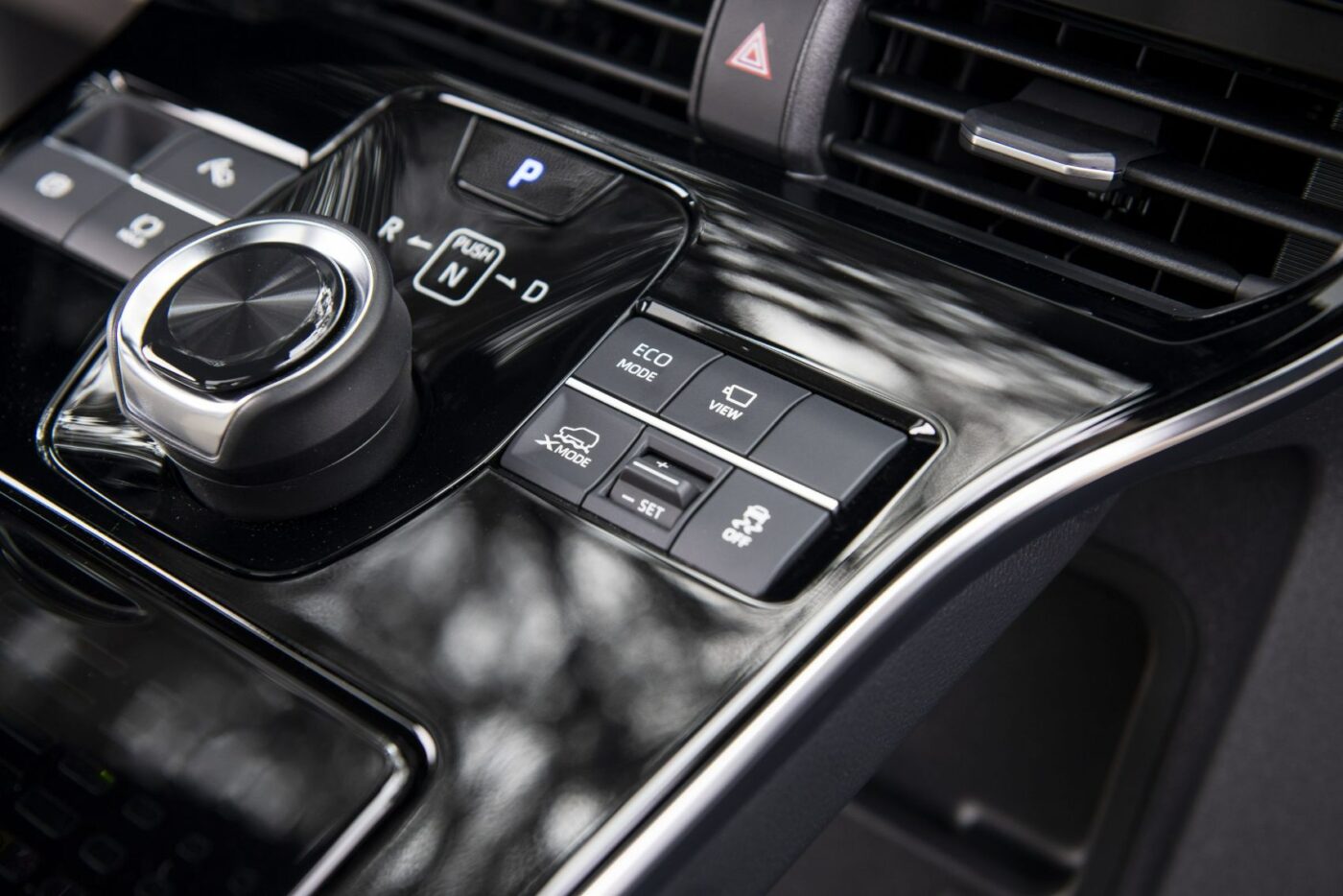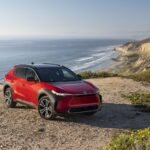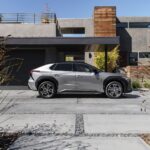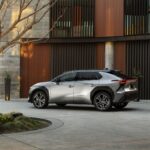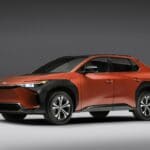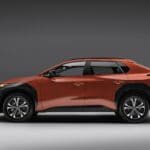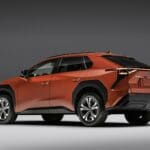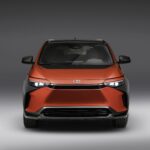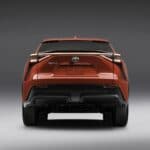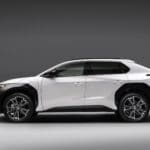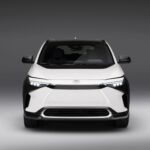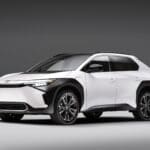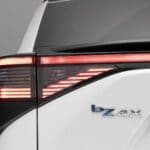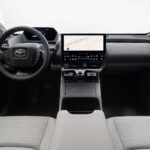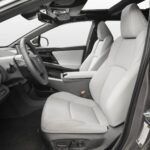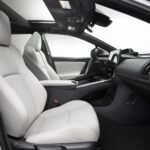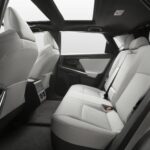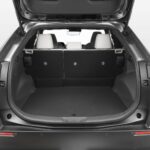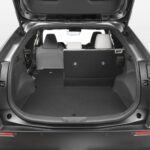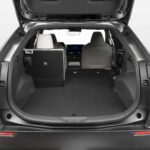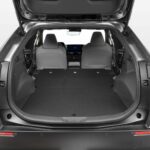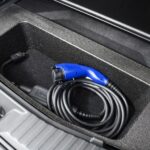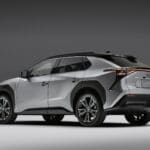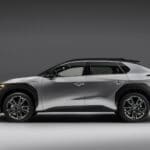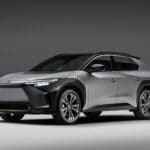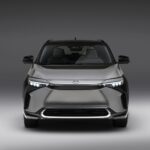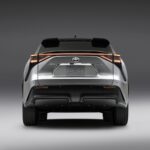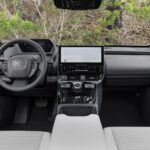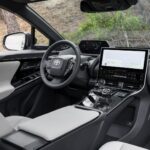The 2023 Toyota bZ4X is not the Japanese automaker’s first EV on U.S. soil. It’s been peddling the Toyota RAV4 EV in California since 1997, and it even worked with Tesla for the second-gen RAV4 EV unveiled in 2012.
However, the all-new bZ4X is Toyota’s first EV riding on an exclusive e-TNGA platform shared with Subaru for the Solterra EV. And instead of the old RAV4 EV’s California-only sales pitch, the new bZ4X will hit U.S. Toyota dealerships across all 50 states nationwide.
Toyota’s daring styling idiom for the bZ4X is worthy of praise, and we’re confident it has Toyota levels of quality, reliability, and family-friendly accouterments. A better question is, will the bZ4X make a compelling argument against dazzling competitors like the Hyundai Ioniq 5, Ford Mustang Mach-E, VW ID.4, Tesla Model Y, Kia EV6, Kia Niro, and the Hyundai Kona Electric?
2023 Toyota bZ4X: What’s New?
The 2023 Toyota bZ4X is an all-new, five-passenger, all-electric crossover developed jointly with Subaru, a partnership that bore fruit in the past with the still-not-turbocharged GR86 and BRZ sports cars. Unlike the Solterra’s planetary name origins, the bZ4x name is short for “beyond Zero” and 4X. The latter, in Toyota-speak, indicates a compact crossover SUV like the RAV4.
The bZ4X is the first Toyota to launch under the global bZ series, said the automaker, and it plans to debut 15 battery-electric vehicles by 2025 – seven of which will spawn from the bZ family.
The bZ4X is longer, wider, and slightly lower than a RAV4, but it has a 6.3-inch longer wheelbase than Toyota’s best-selling compact SUV. The result is 42.1 inches of front legroom and 35.3 inches of rear legroom, with 27.7 cubic feet of cargo space behind the second-row seats.
Powertrain Options
The 2023 Toyota bZ4X will arrive at dealerships in two trim variants: XLE and Limited. Both are available with either a single-motor FWD or dual-motor AWD powertrain and driveline. The FWD variant pumps out 201 horsepower, while the AWD version has 215 horsepower.
The single-motor bZ4X is a good match for the Kia Niro EV and VW ID.4 FWD, but the dual-motor falls short of an equivalent Hyundai Ioniq 5/Kia EV6, which offers up to 320 horsepower.
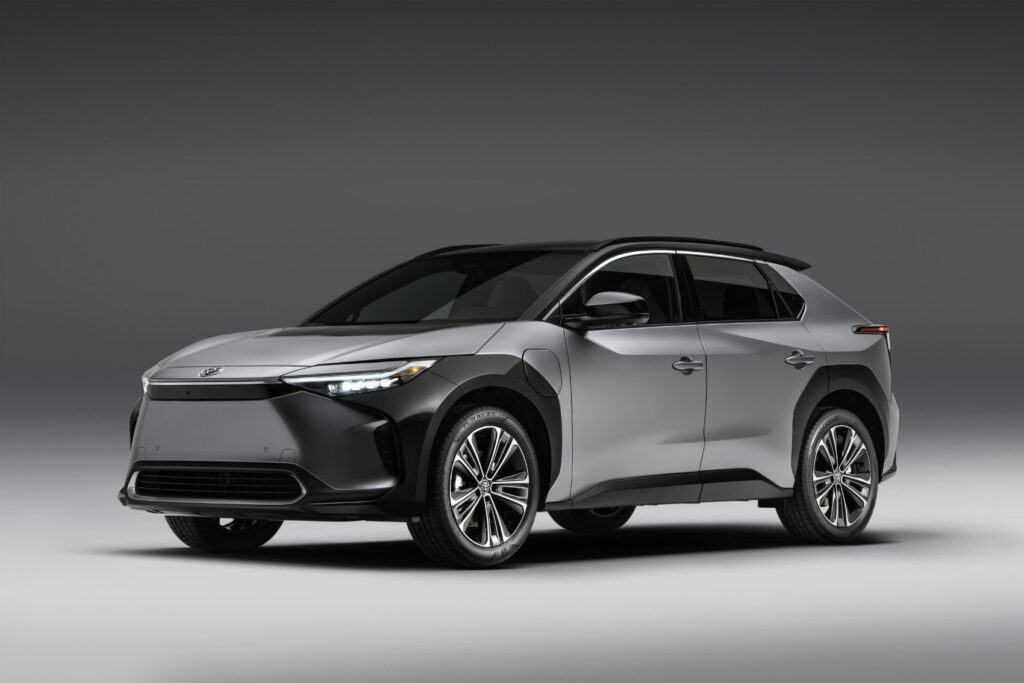
How Fast Is The Toyota bZ4X?
Toyota claims the bZ4X FWD can go from zero to 60 mph in 7.1 seconds, while the AWD version does it in 6.5 seconds. The top speed is 99 mph (160 kph).
2023 Toyota bZ4X Driving Range & Charging
The bZ4X FWD comes with a 63.4 kWh battery, while the AWD version has a slightly bigger 65.5 kWh power unit. Toyota claims the FWD achieves up to 252 miles of range, and it quotes 228 miles of range for the bZ4X AWD. Regenerative braking is standard to extend the range.
The EPA estimates the bZ4X FWD at 131/107 city/highway with 119 combined MPGe, while the bZ4X AWD achieves 114/94 city/highway and 104 combined MPGe.
When the batteries run dry, the bZ4X has an onboard 6.6 kW charger to replenish the juice in around nine hours using Level 2 charging. Additionally, the bZ4X is compatible with up to 150 kW DC fast chargers to recharge in under an hour. Buyers also received one year of complimentary charging at EVgo charging stations.
Tailored Styling Inside & Out
For the bZ4X, Toyota designers wanted to “challenge conventions” with a sleeker design, flowing character lines, and futuristic elements. We’d be hard-pressed to discern the bZ4X from a Subaru Solterra when viewed from any angle, but we somehow prefer the Toyota over the Subaru’s outdoorsy vibe.
Inside, the bZ4X has Softex fabric seats and piano black trim, while soundproof glass ensures a whisper-quiet ride with lesser wind and road noise.
Standard equipment includes a 12.3-inch infotainment touchscreen with over-the-air (OTA) updates, voice control, cloud-based navigation, and dual Bluetooth with Apple CarPlay and Android Auto connectivity. At the same time, other features like WiFi and a JBL audio system with nine speakers, a nine-inch subwoofer, and an eight-channel amplifier remain available.
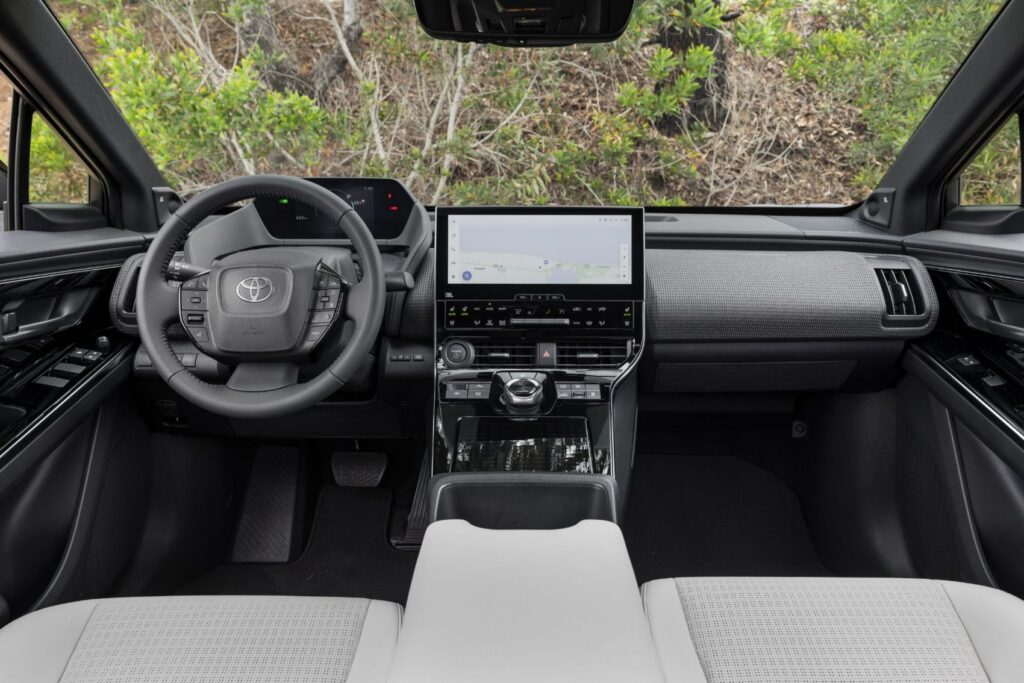
Toyota Safety Sense 3.0
The 2023 Toyota bZ4X is the first to have TSS 3.0, the automaker’s latest generation of advanced driving aids. It now has a monocular camera and a millimeter-wave radar to deliver updated safety features like a pre-collision system with low-light cyclist detection, guardrail detection, and daytime motorcyclist detection.
It also has lane recognition with lane tracing, blind-spot monitoring, safe exit assist, and a bird’s eye 360-degree camera with perimeter scanning and a curb view feature (available for the bZ4X Limited).
Toyota bZ4X Warranty
The new Toyota bZ4X leaves the factory with a three-year/36,00-mile bumper-to-bumper warranty and an eight-year/100,000-mile electric drive warranty for the electric motors and battery pack. Furthermore, the bZ4X comes standard with ToyotaCare, including two years or 25,000 miles of factory-scheduled maintenance and three years (unlimited miles) of 24-hour roadside assistance.
It makes sense to look into an extended warranty if you drive more miles than the average person. This comprehensive guide will help you determine if a Toyota extended warranty is right for you.
2023 Toyota bZ4X: Pricing & Availability
The 2023 Toyota bZ4X XLE FWD starts at $43,215, while the Limited FWD has a $47,915 base price. On the other hand, the bZ4X XLE AWD begins at $45,295, while the Limited AWD starts at $48,780. All price figures are inclusive of $1,215 destination fee.
The bZ4X is eligible for up to $7,500 in federal tax credits, although Toyota’s electric vehicle tax credits could run out by June 2022. The first deliveries will arrive at Toyota dealerships in the spring of 2022.
Alvin Reyes is an Automoblog feature columnist and an expert in sports and performance cars. He studied civil aviation, aeronautics, and accountancy in his younger years and is still very much smitten to his former Lancer GSR and Galant SS. He also likes fried chicken, music, and herbal medicine.
Photos & Source: Toyota Motor Sales, U.S.A., Inc.

